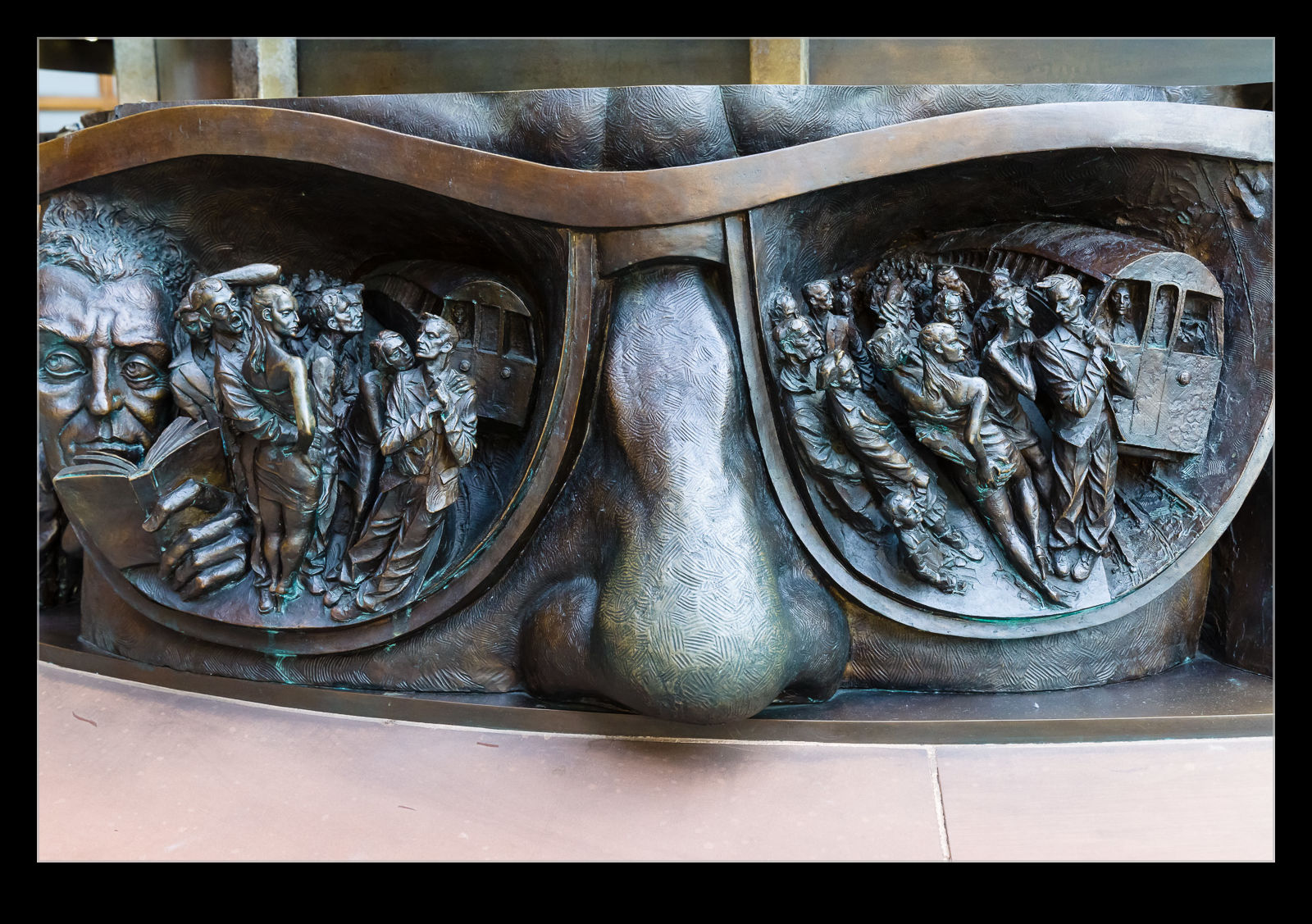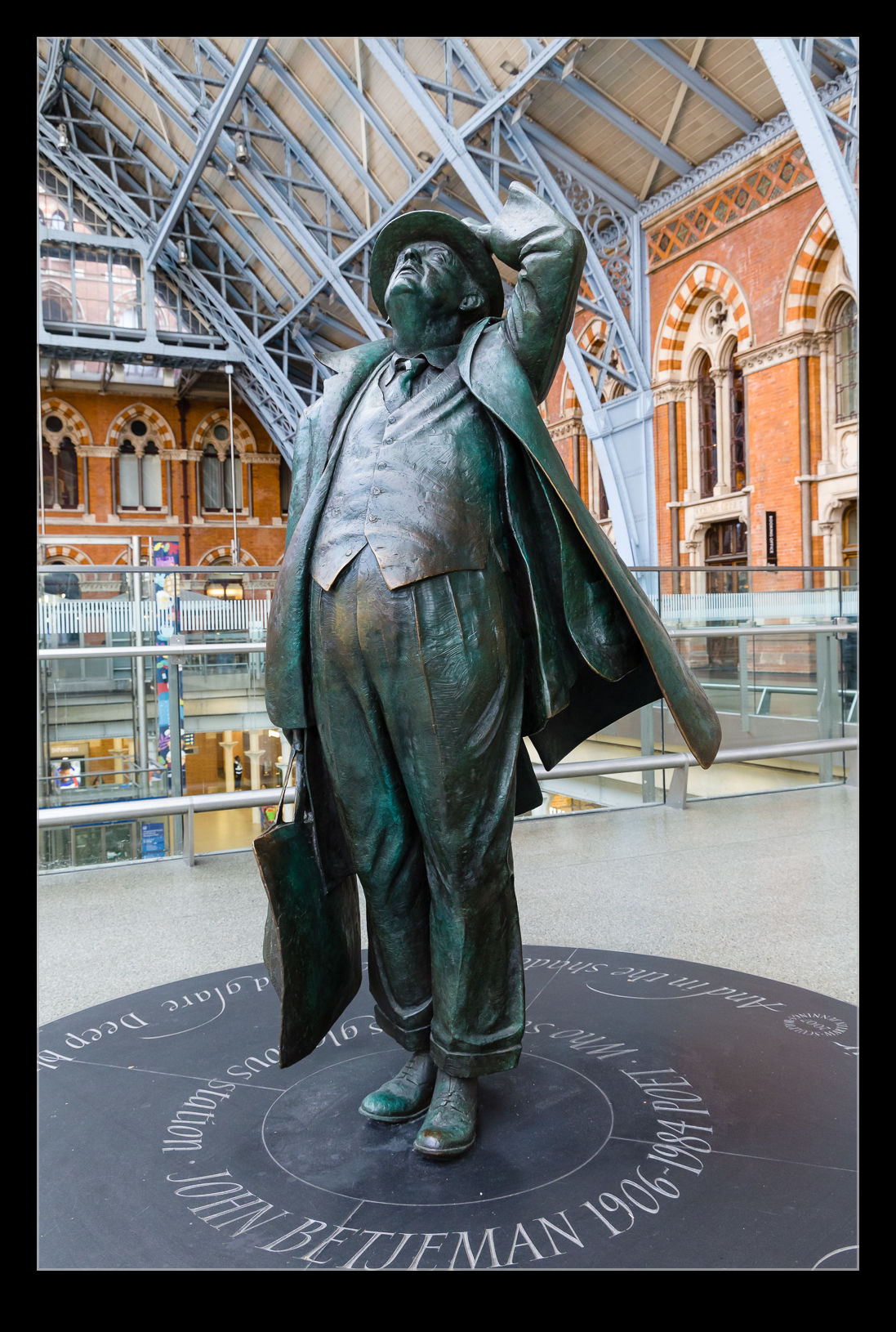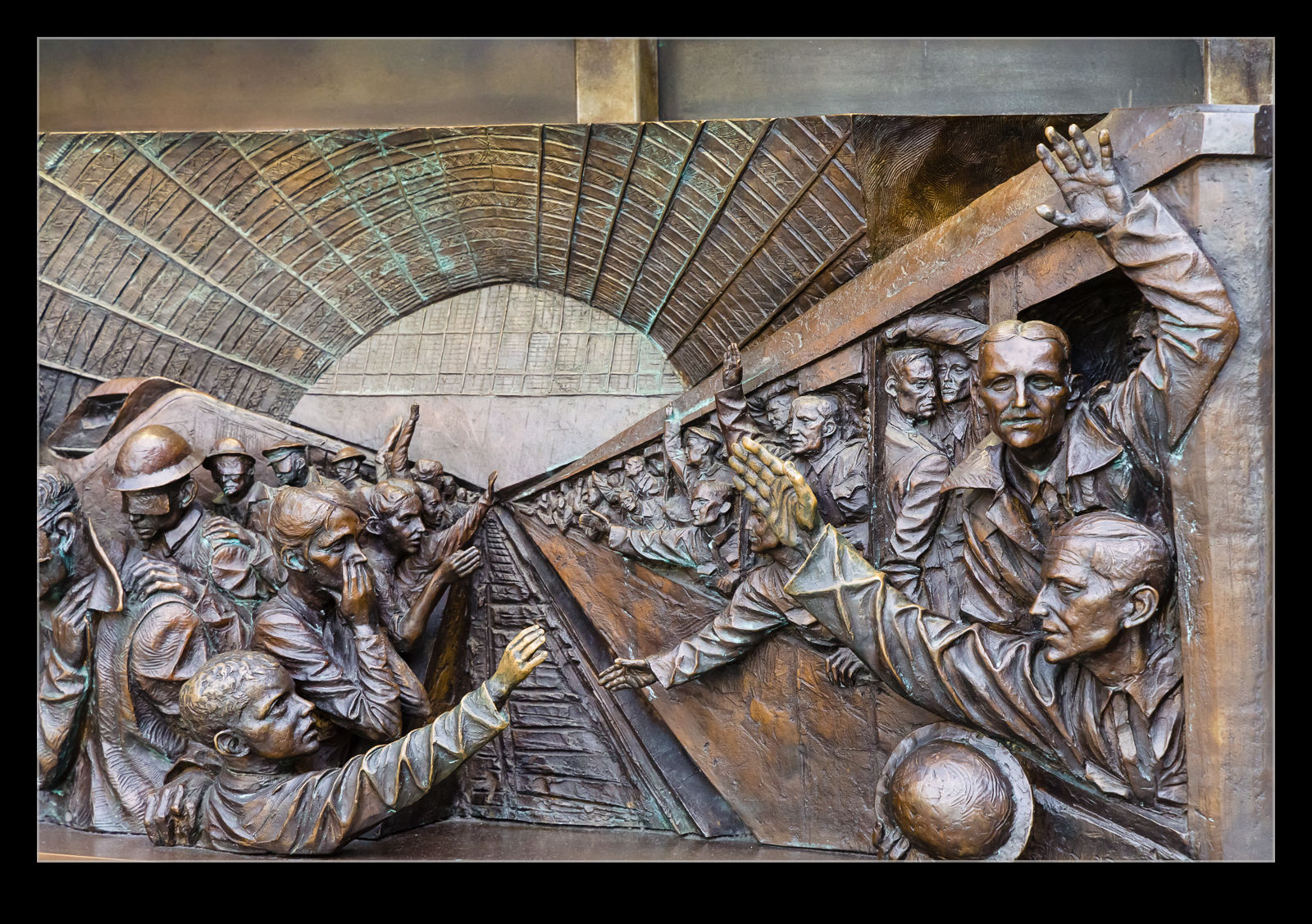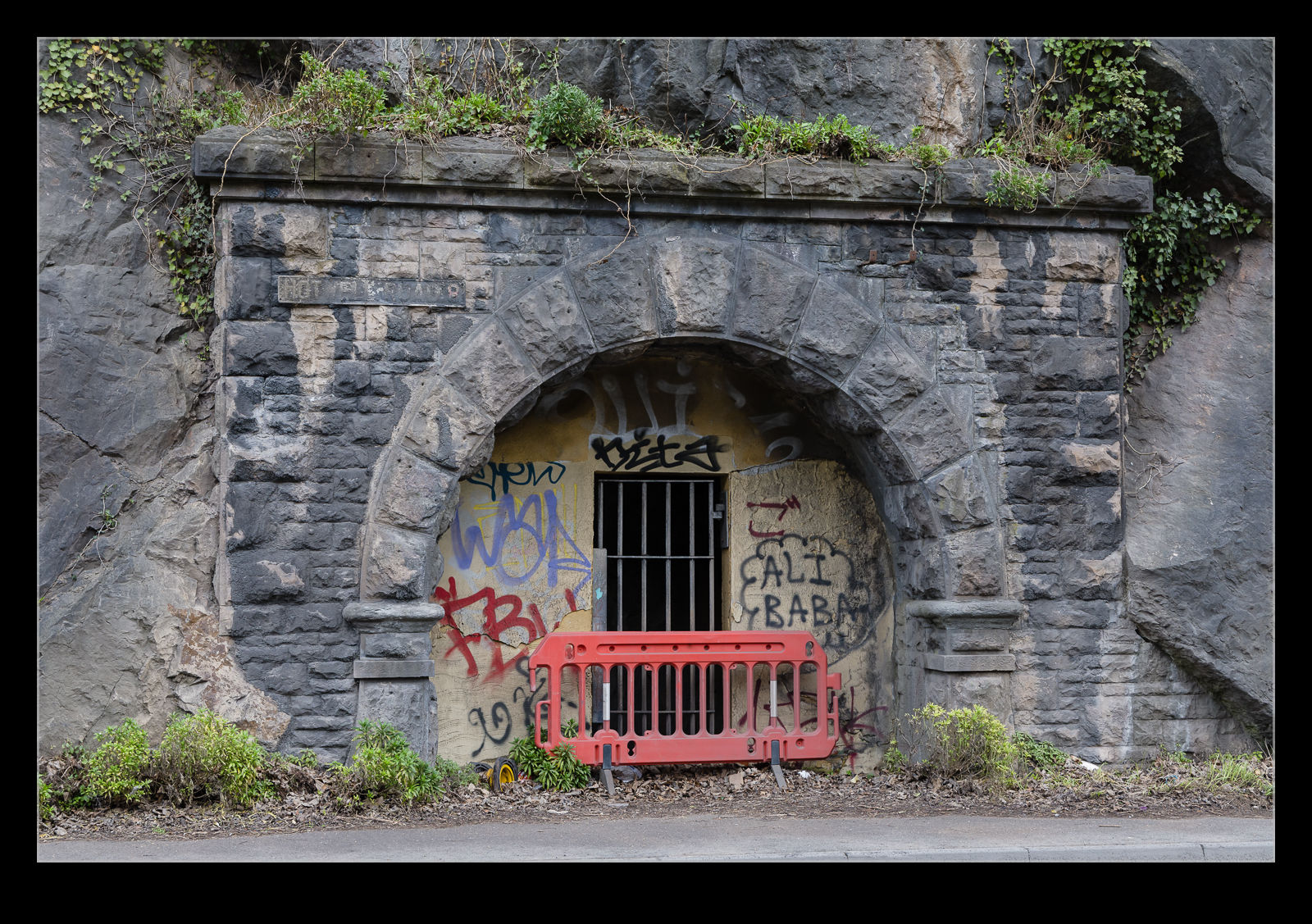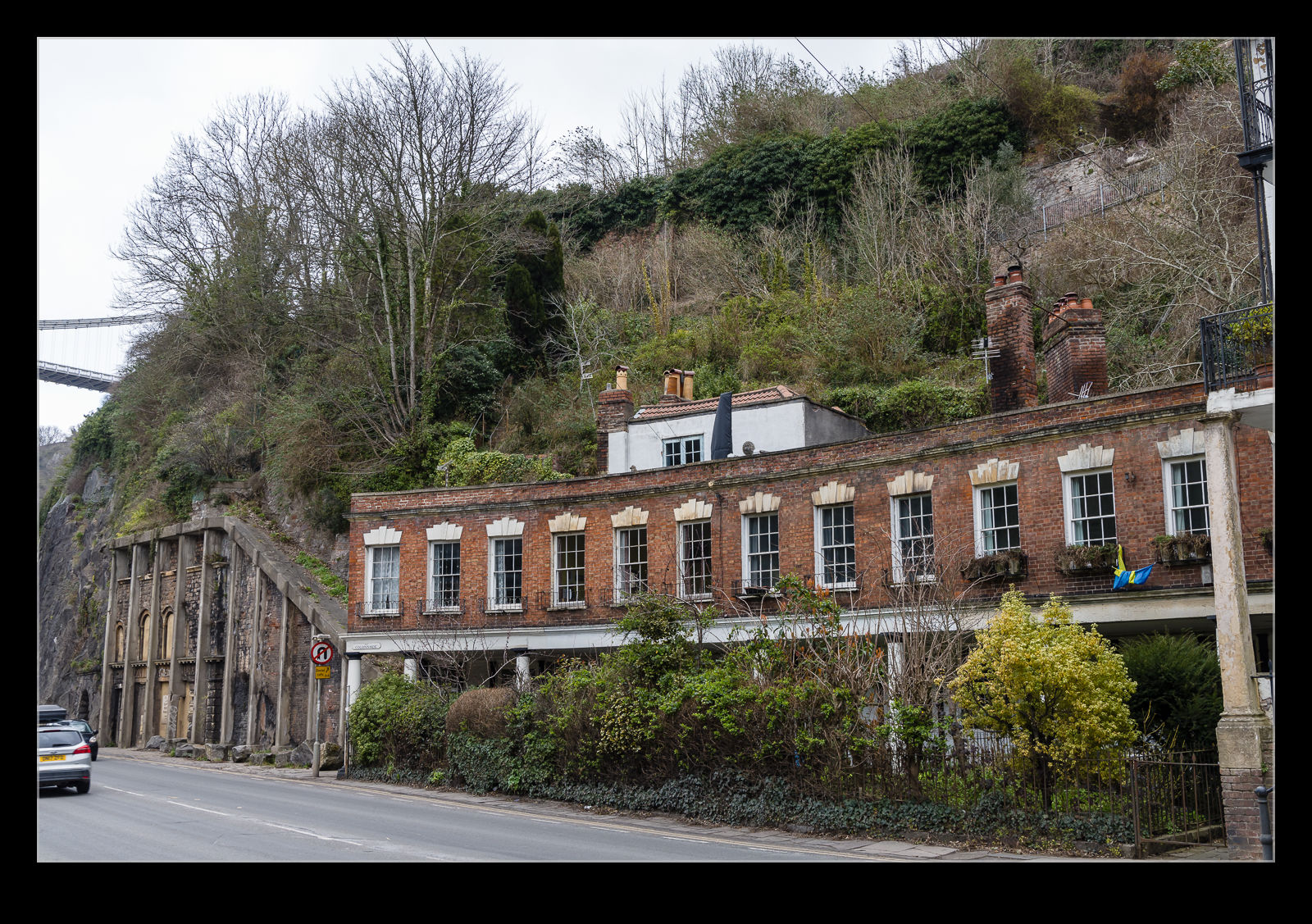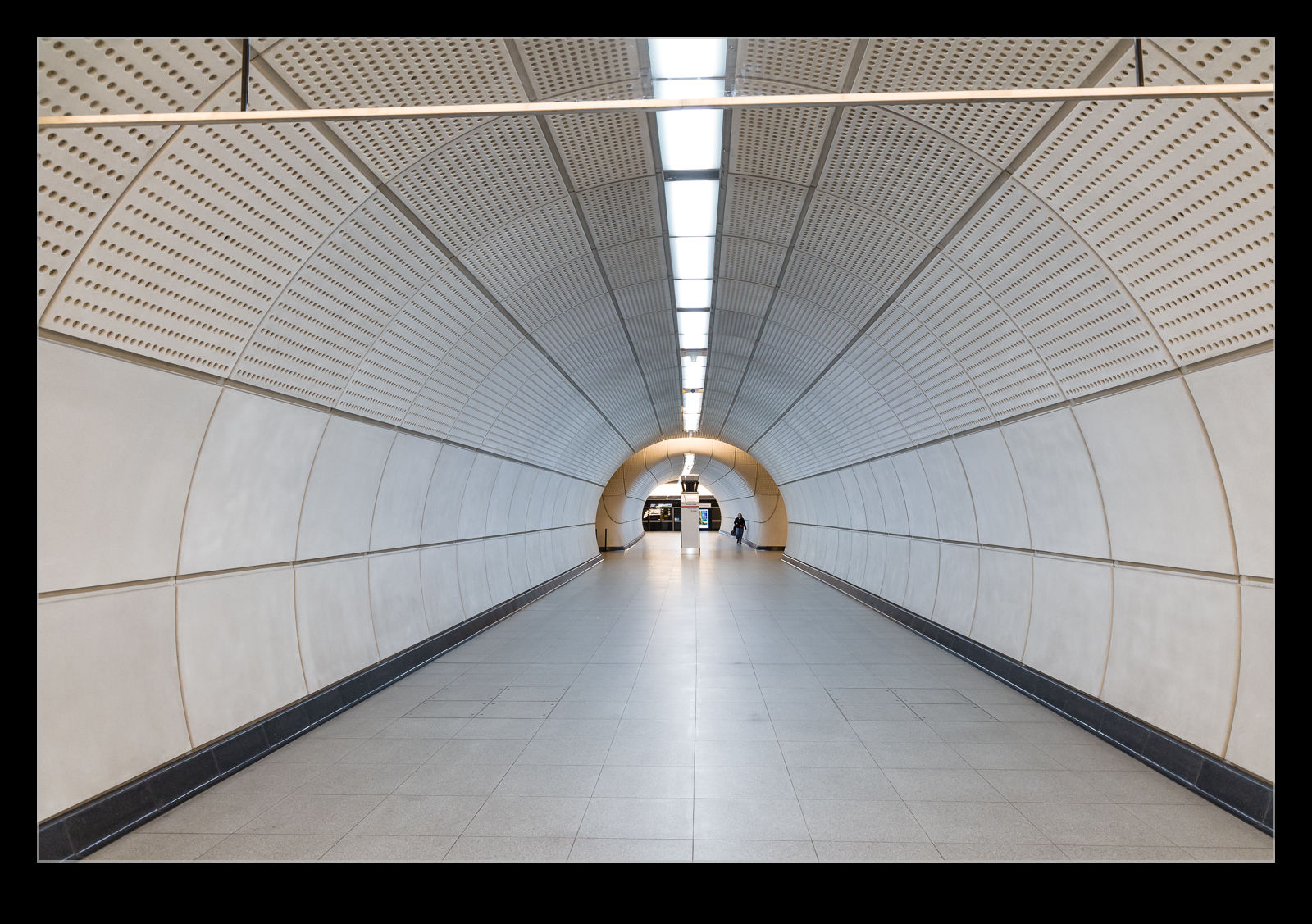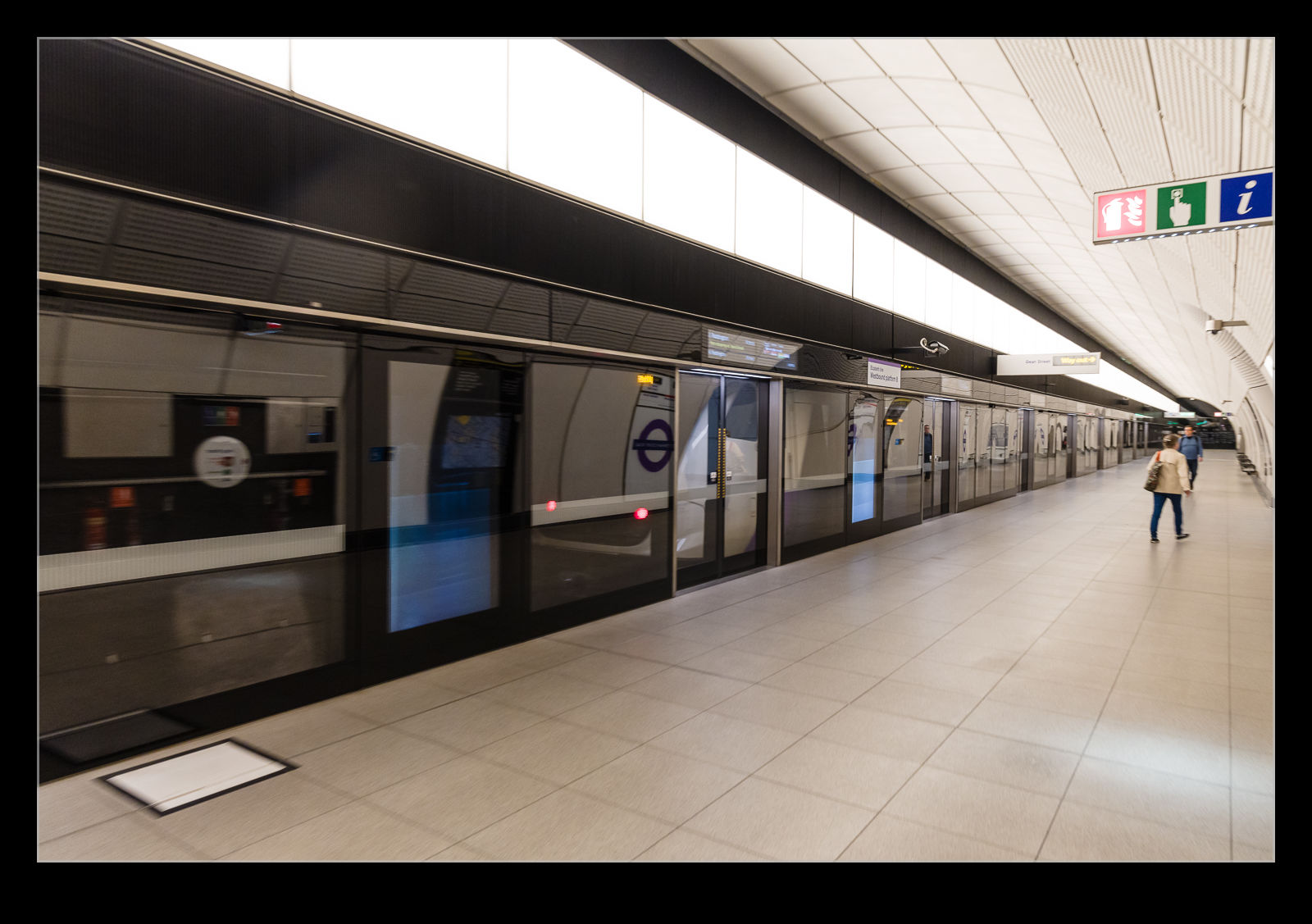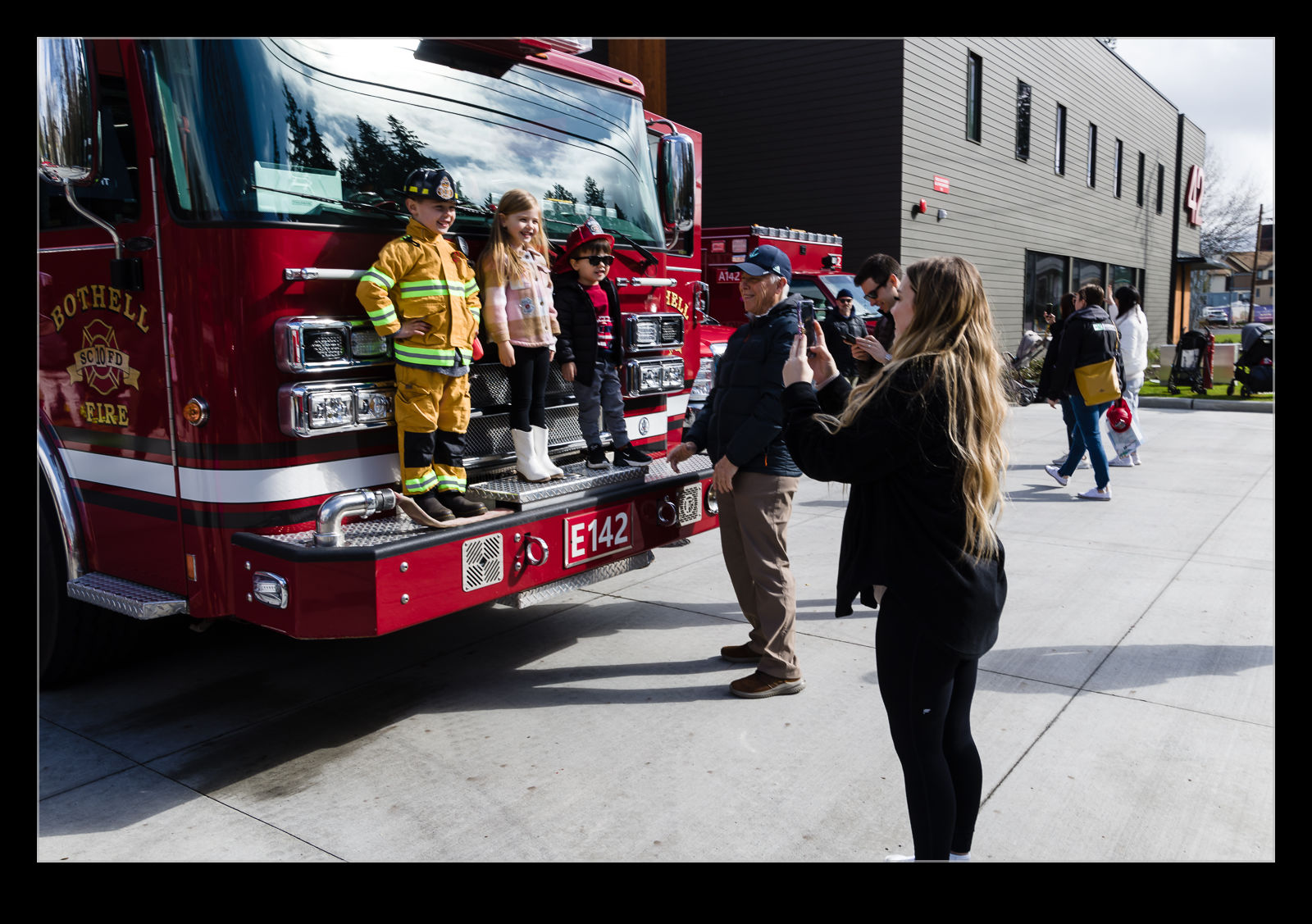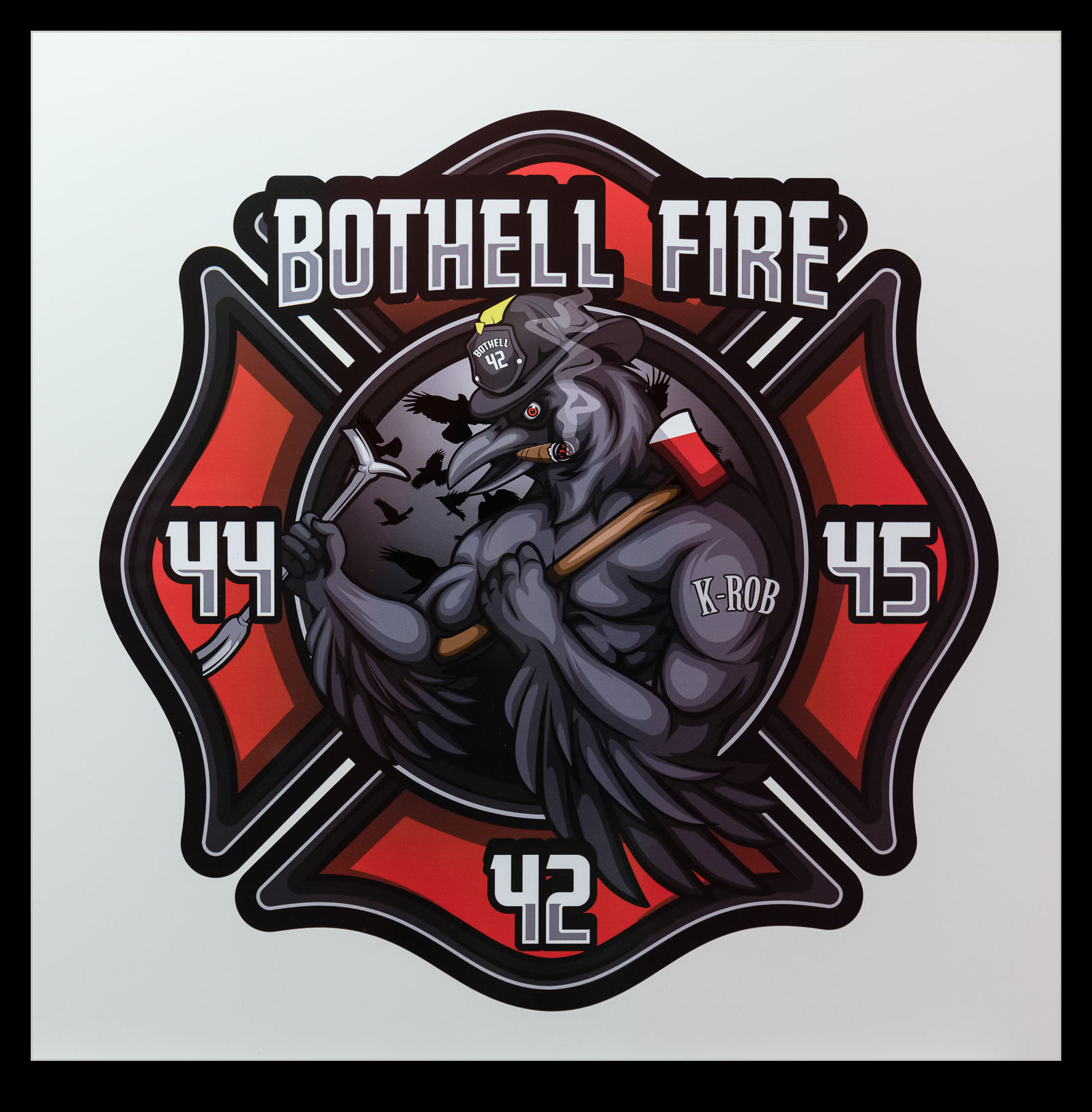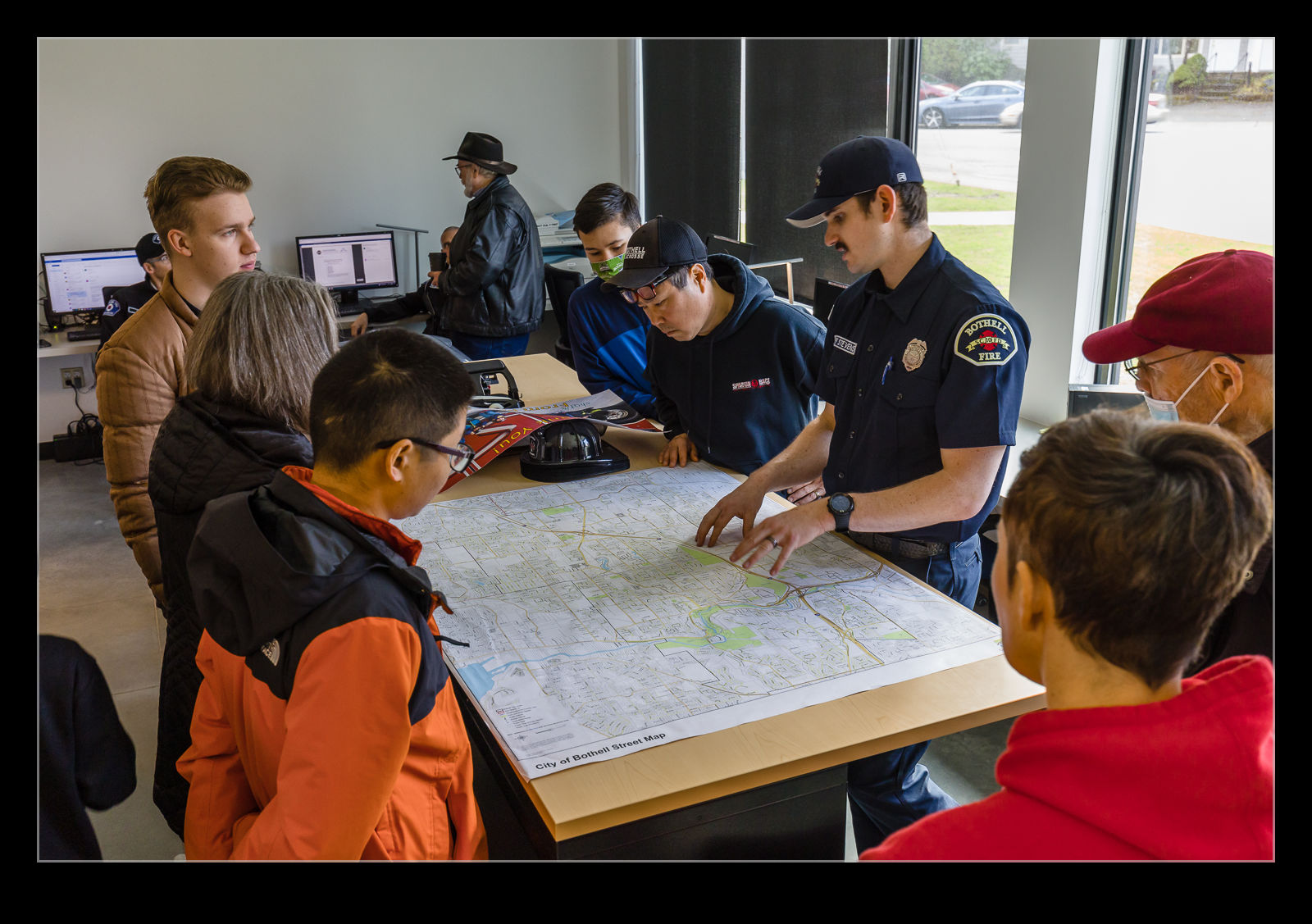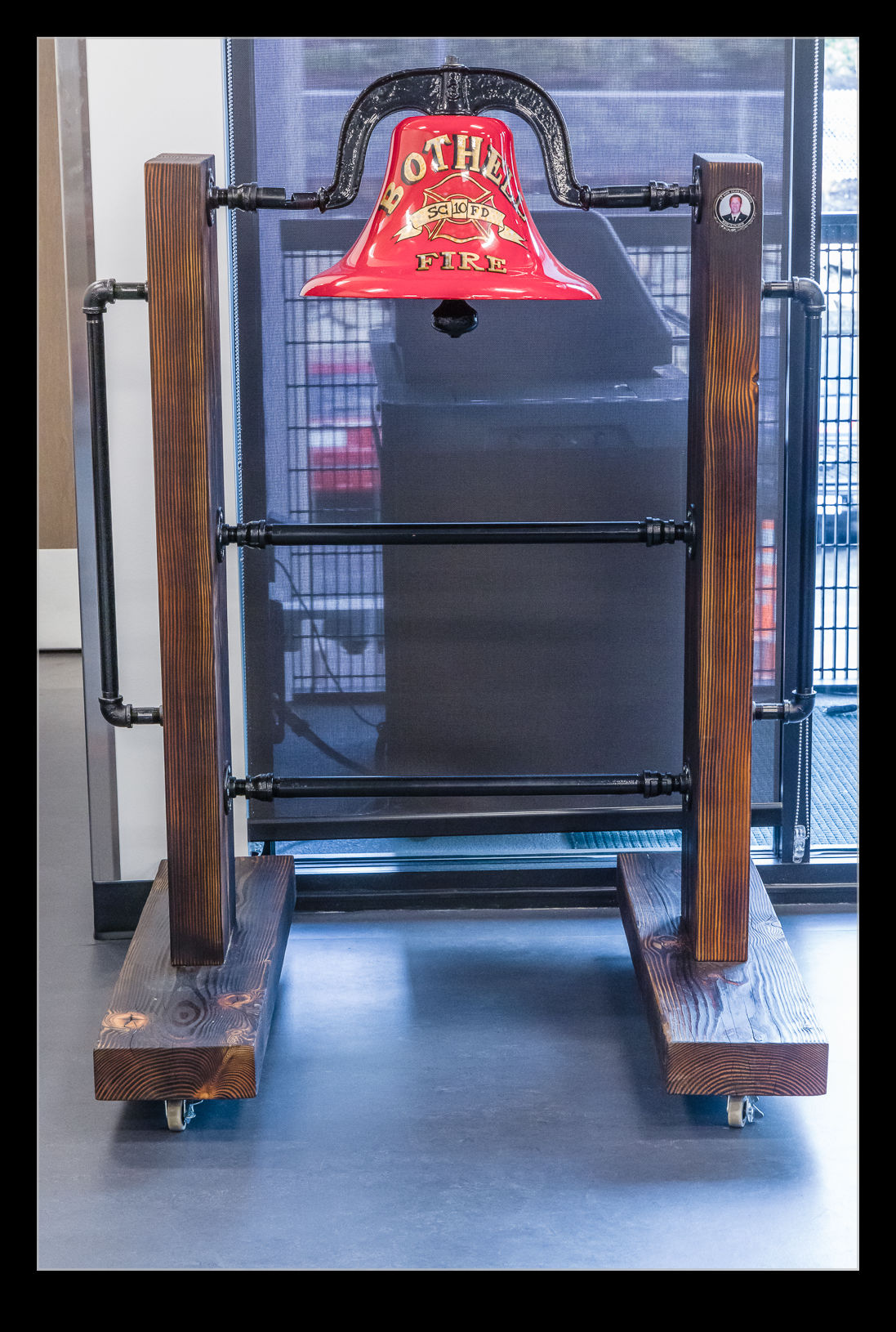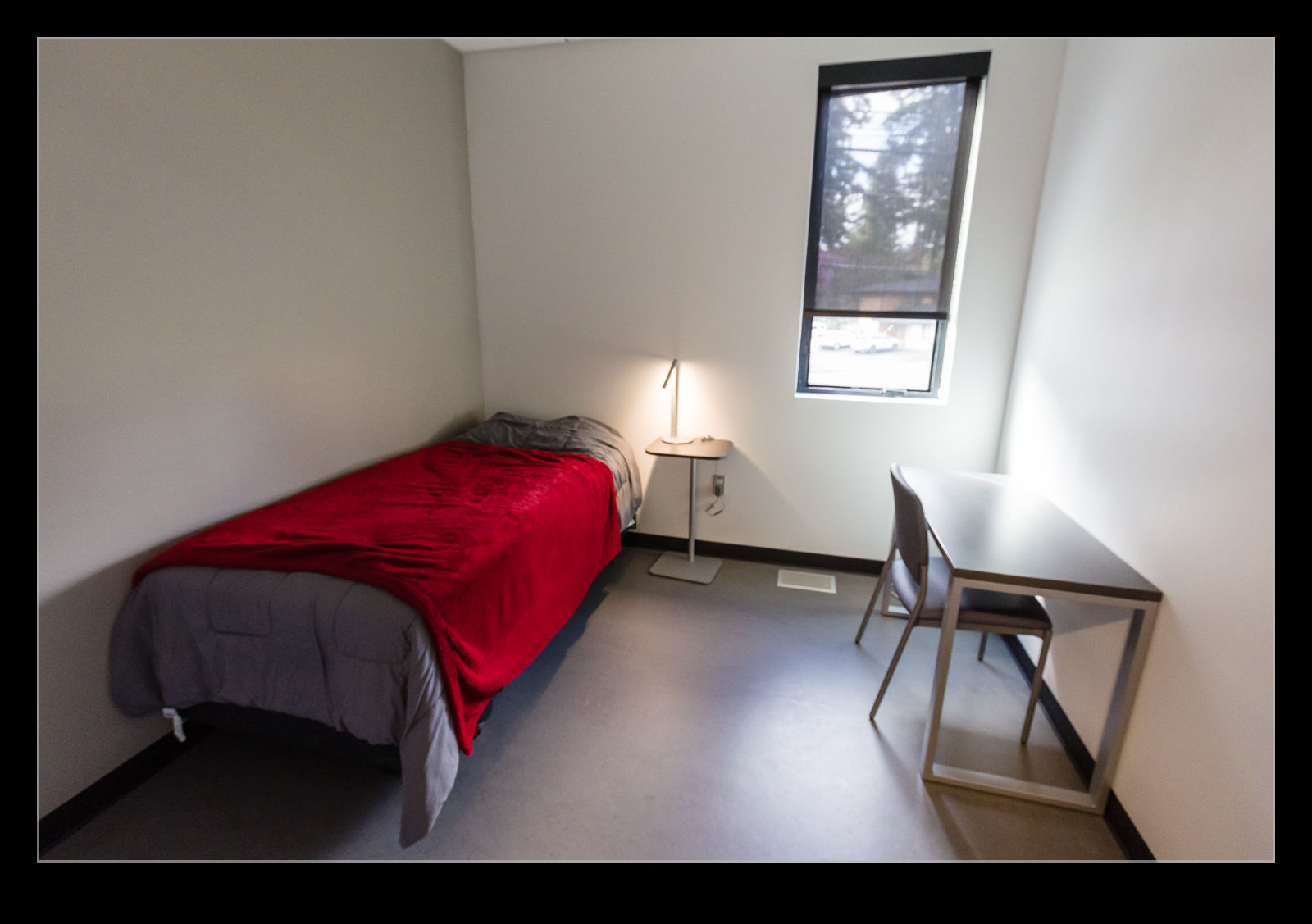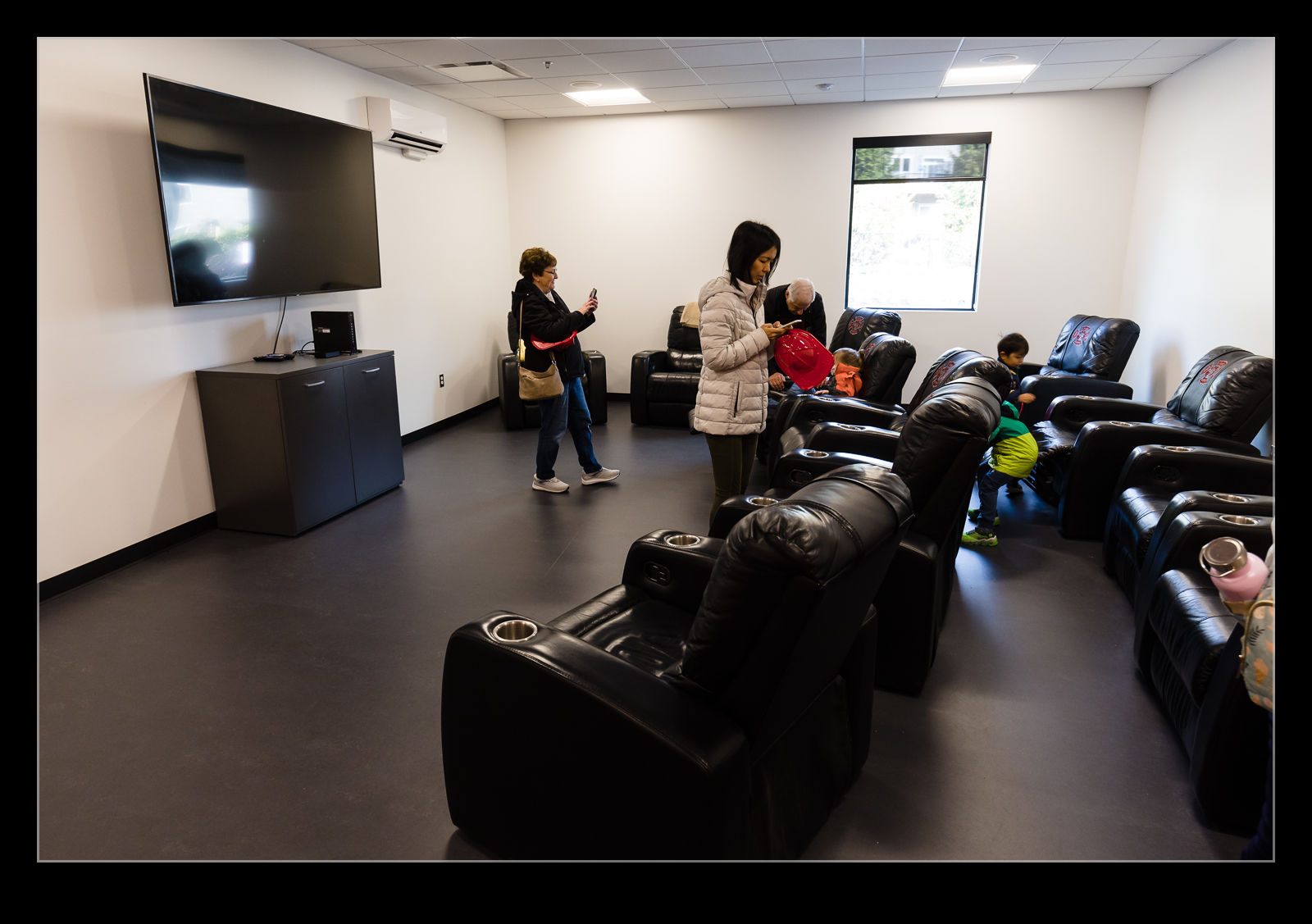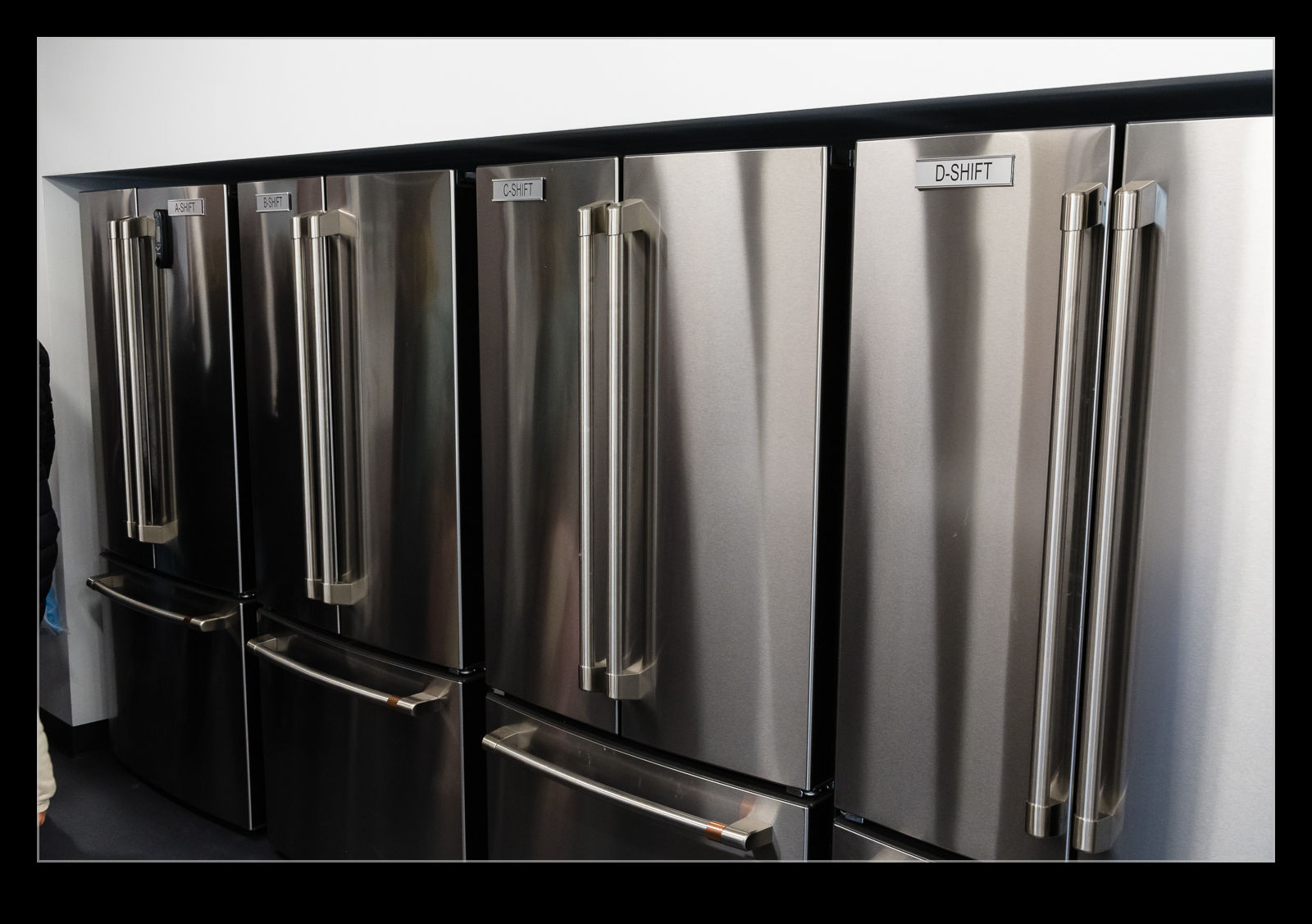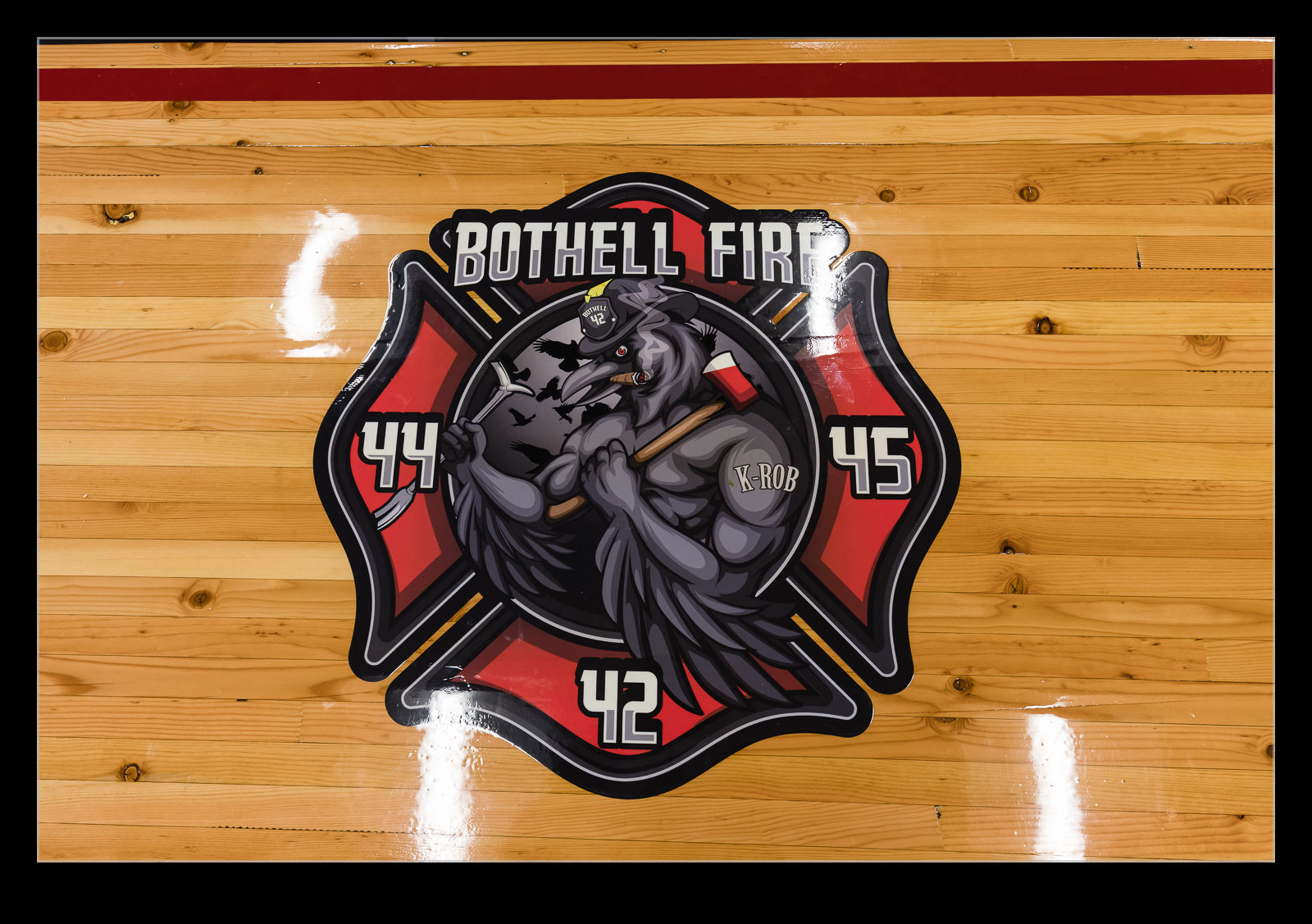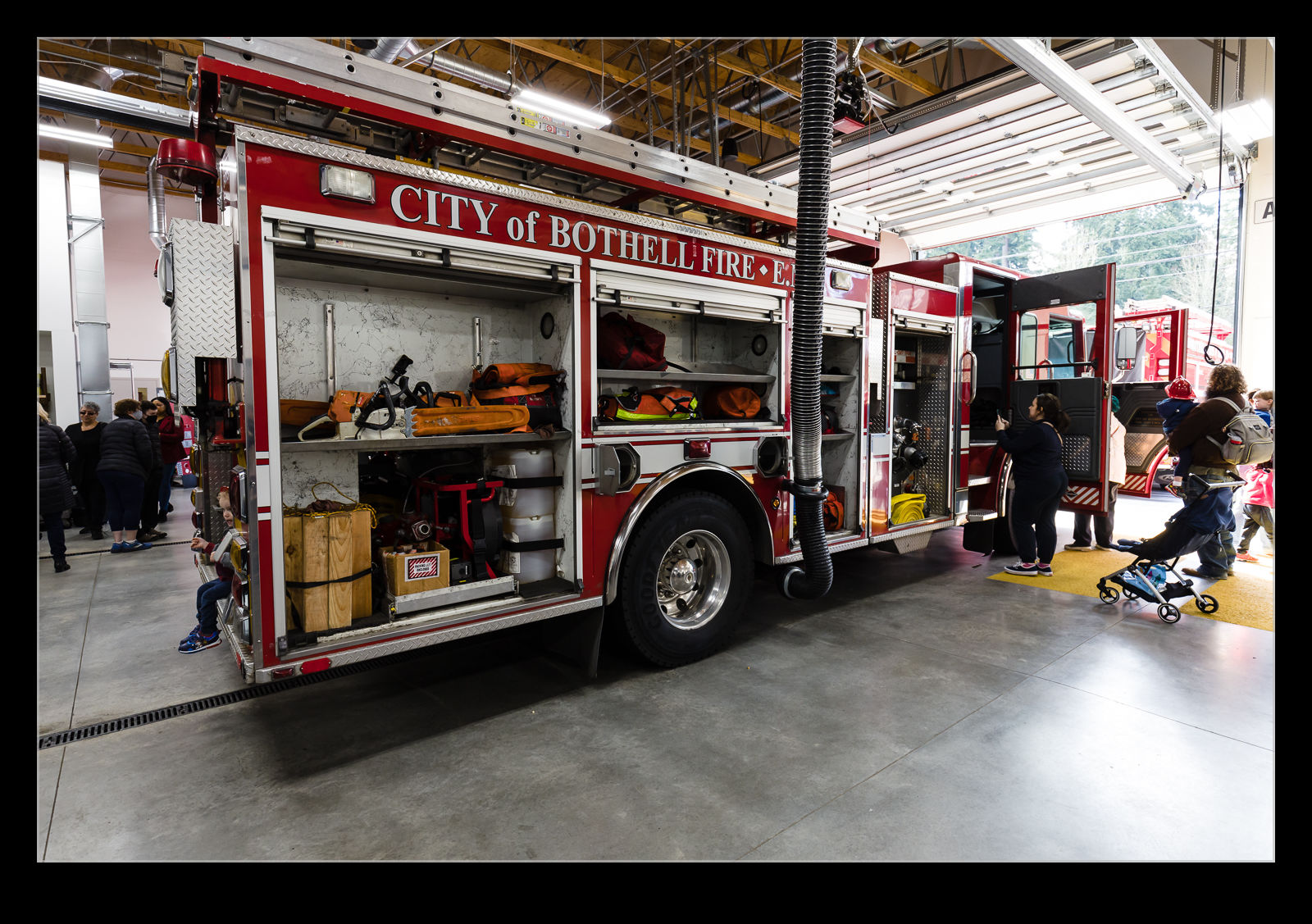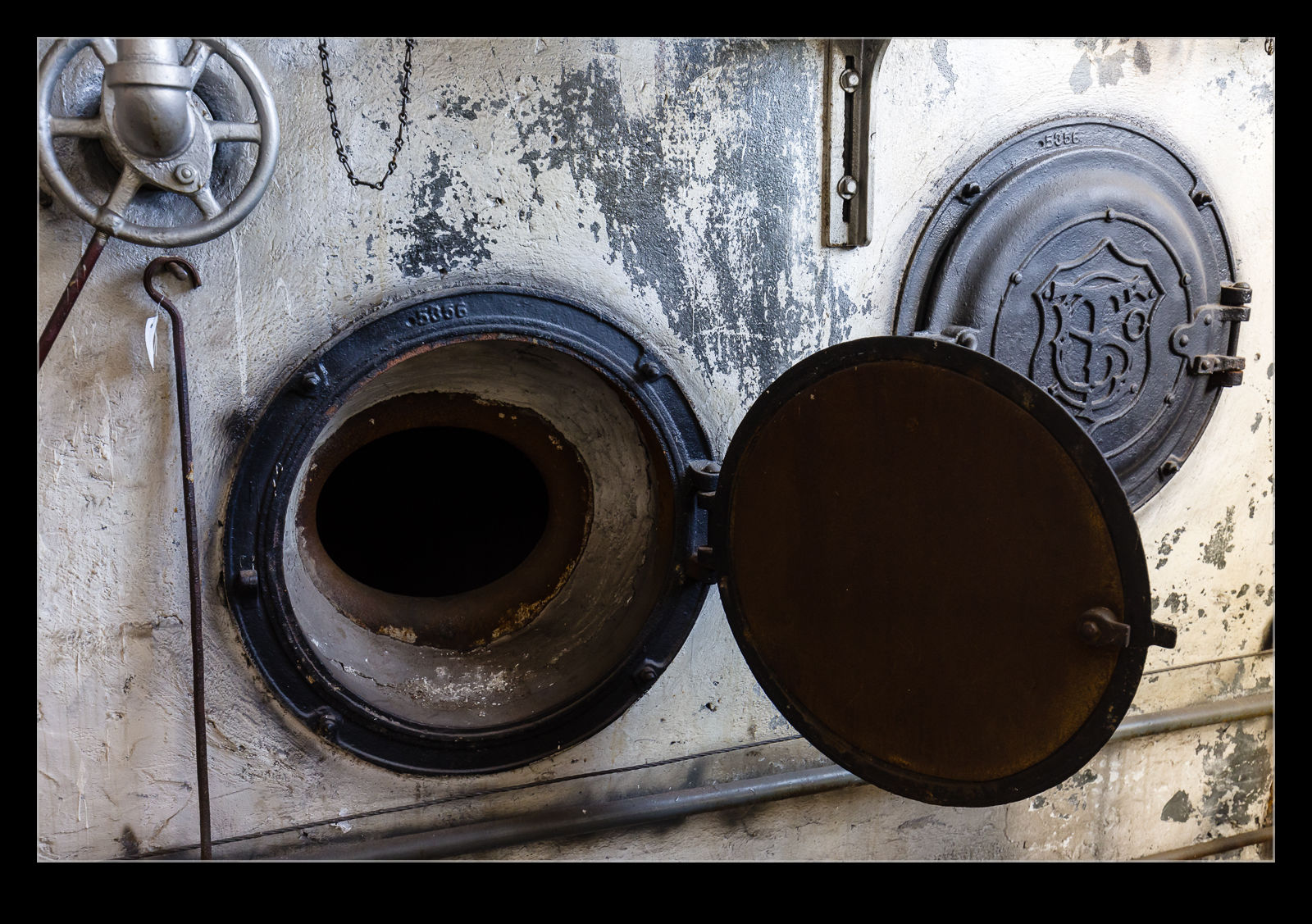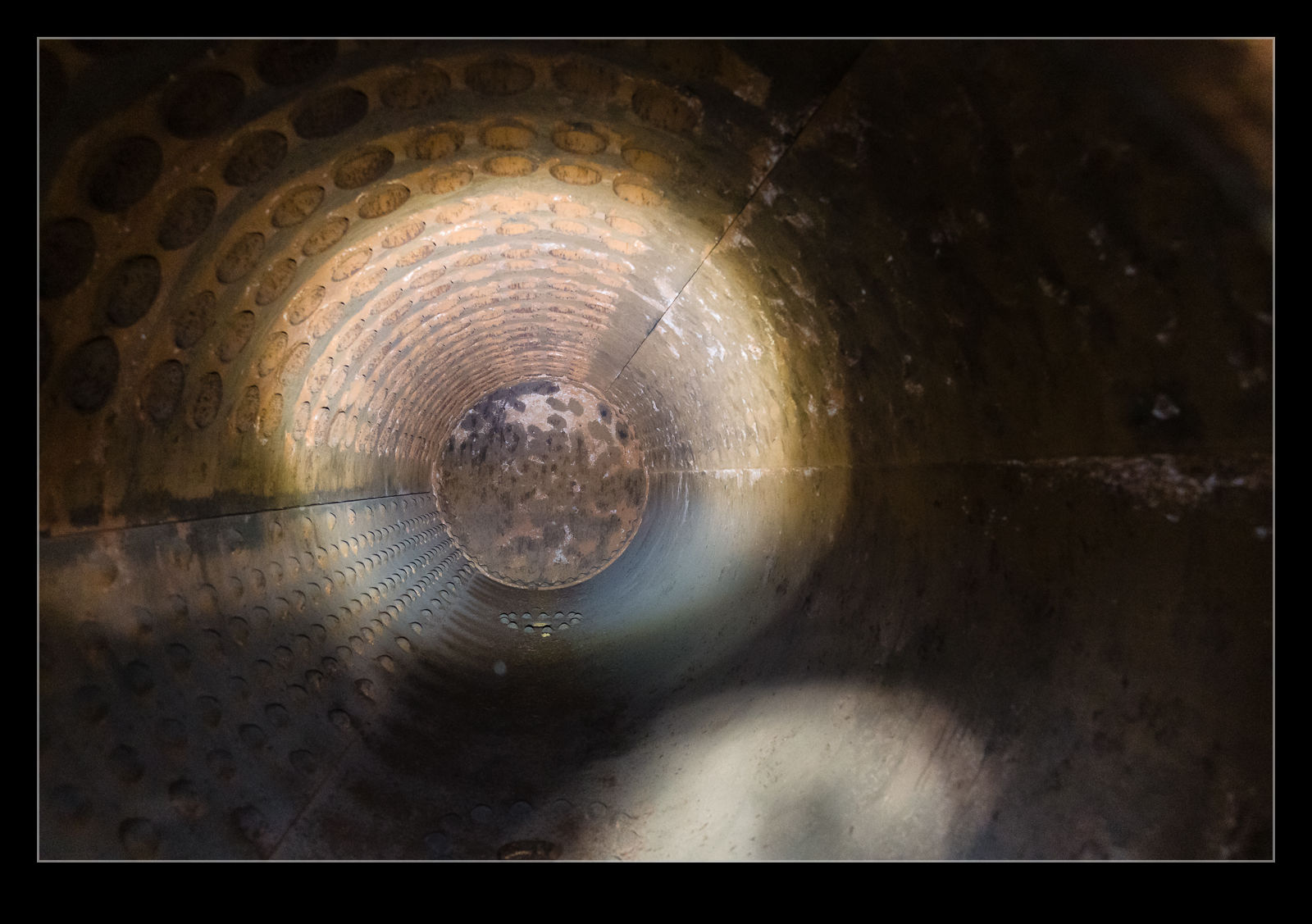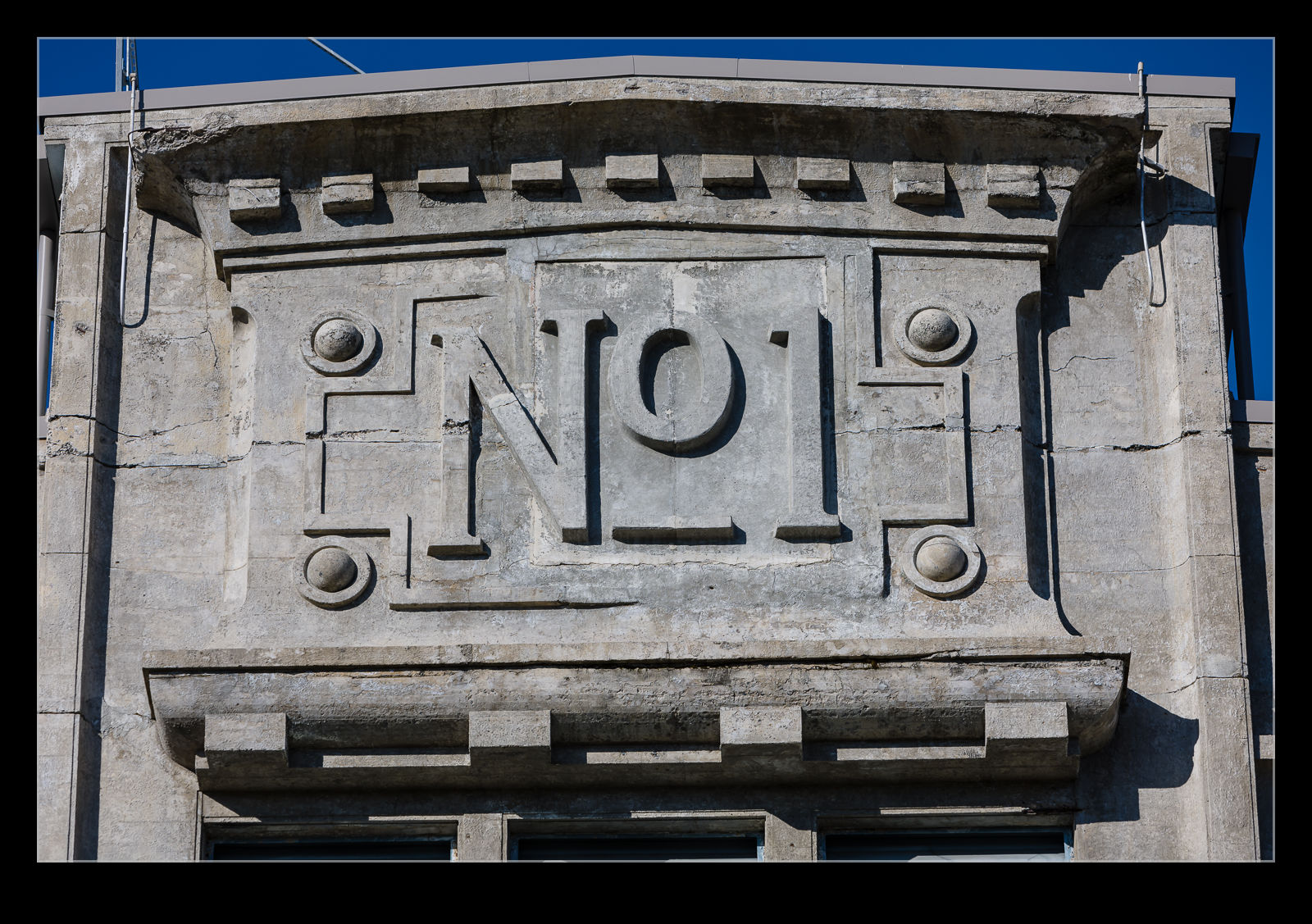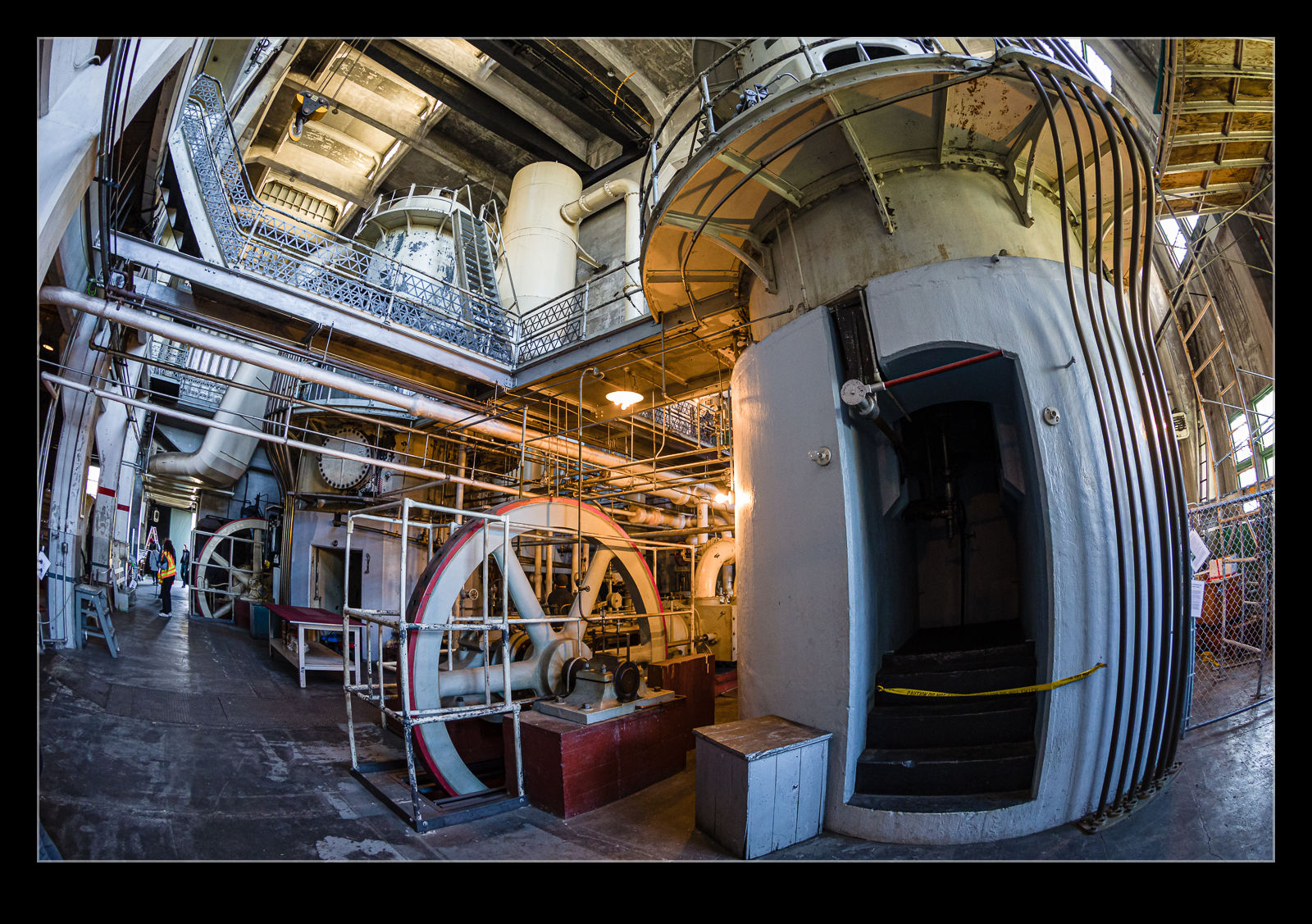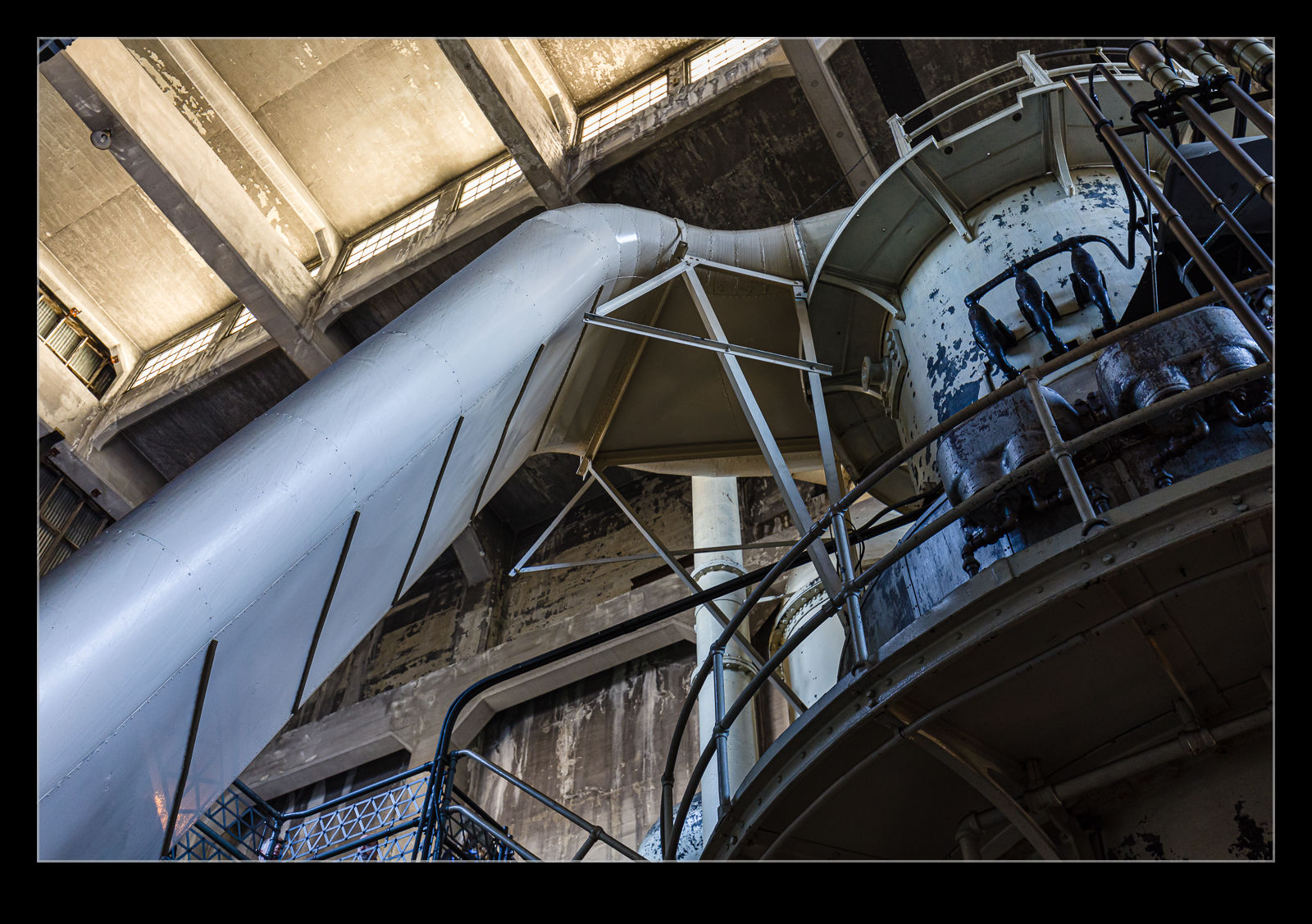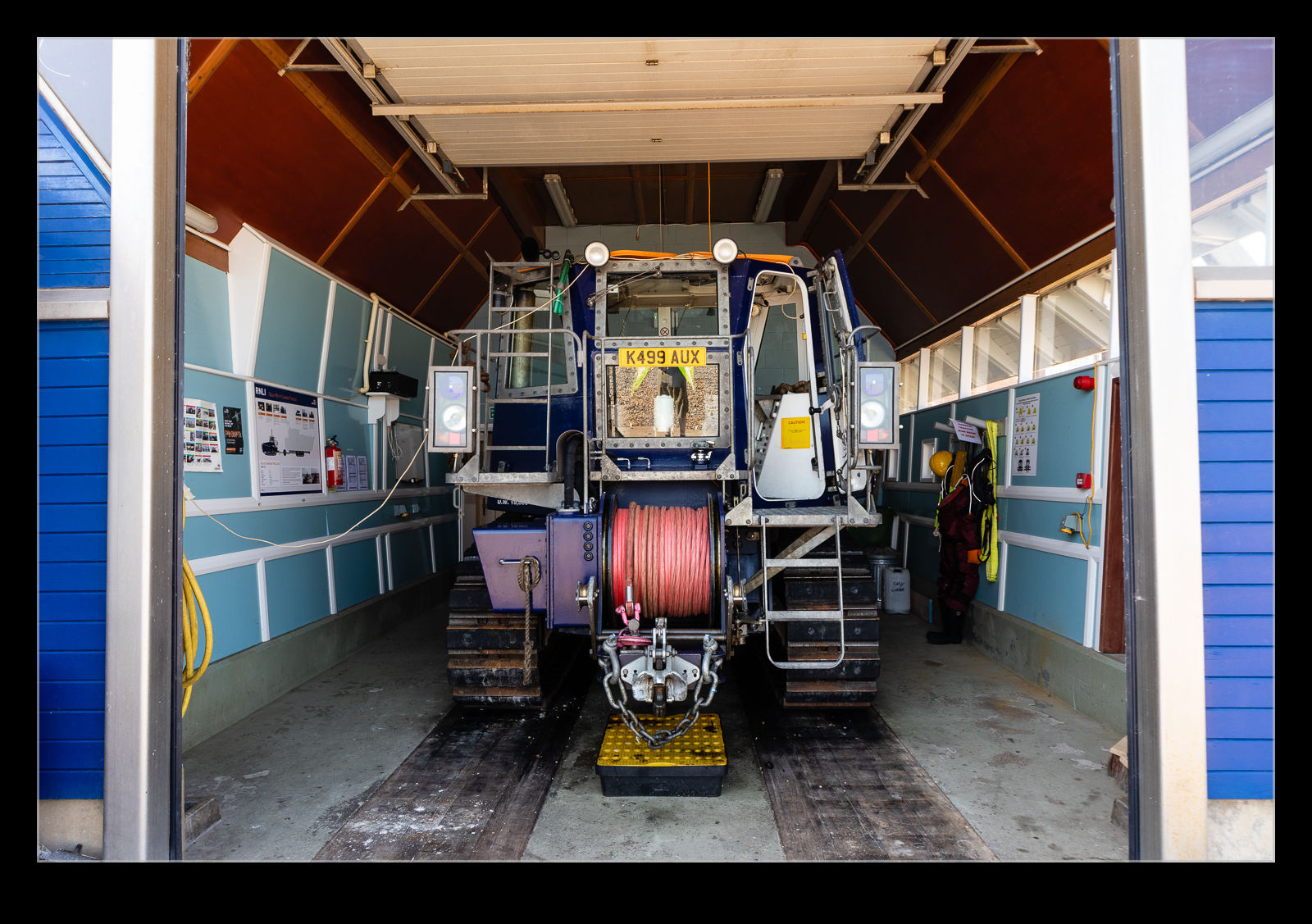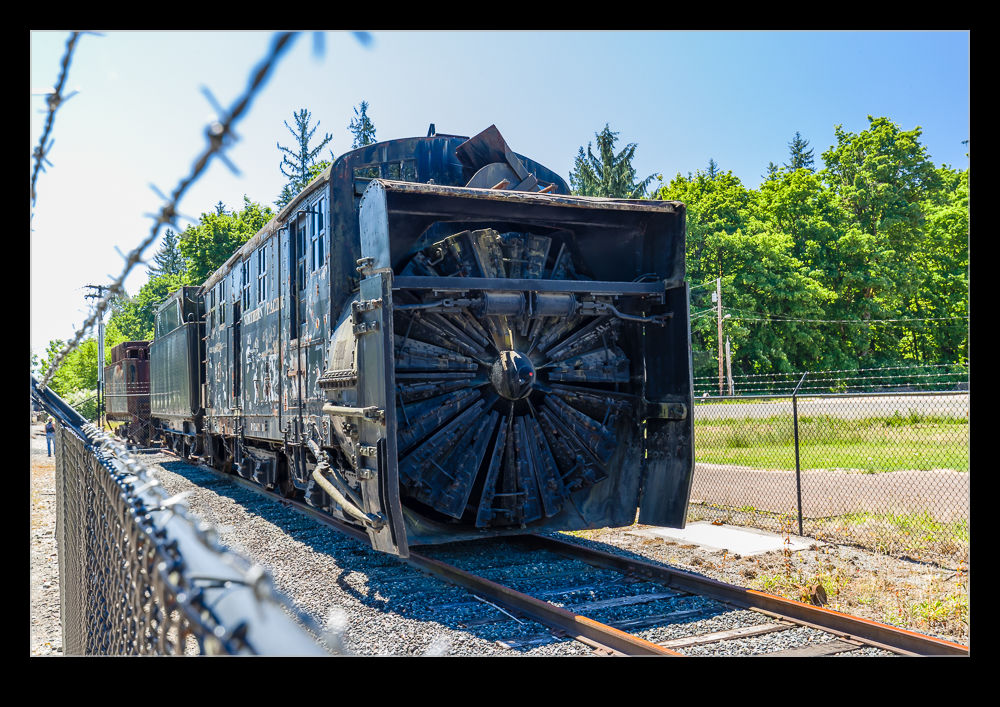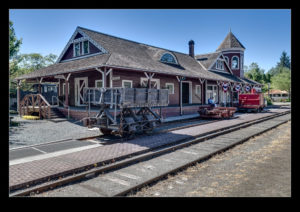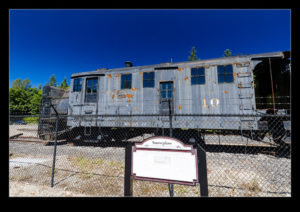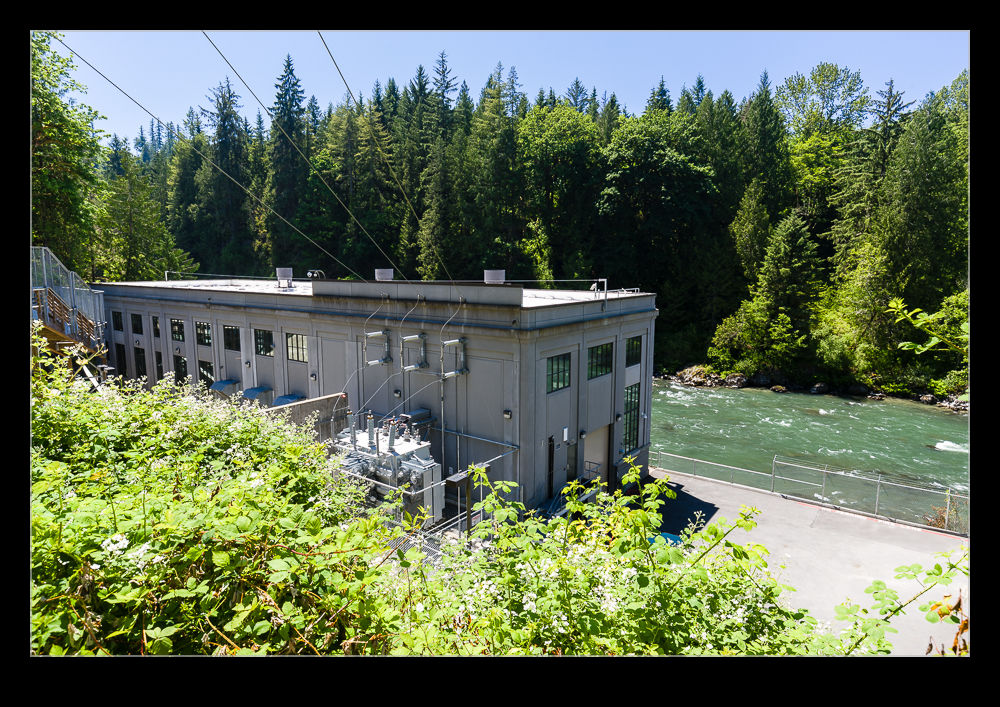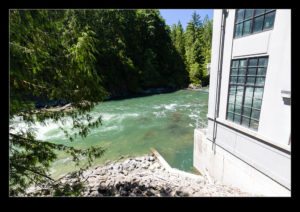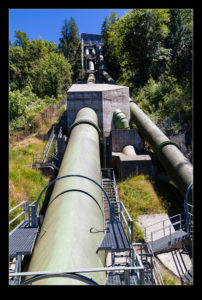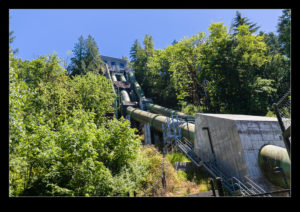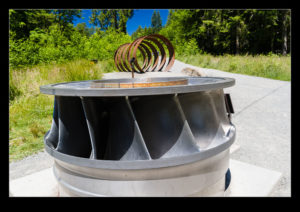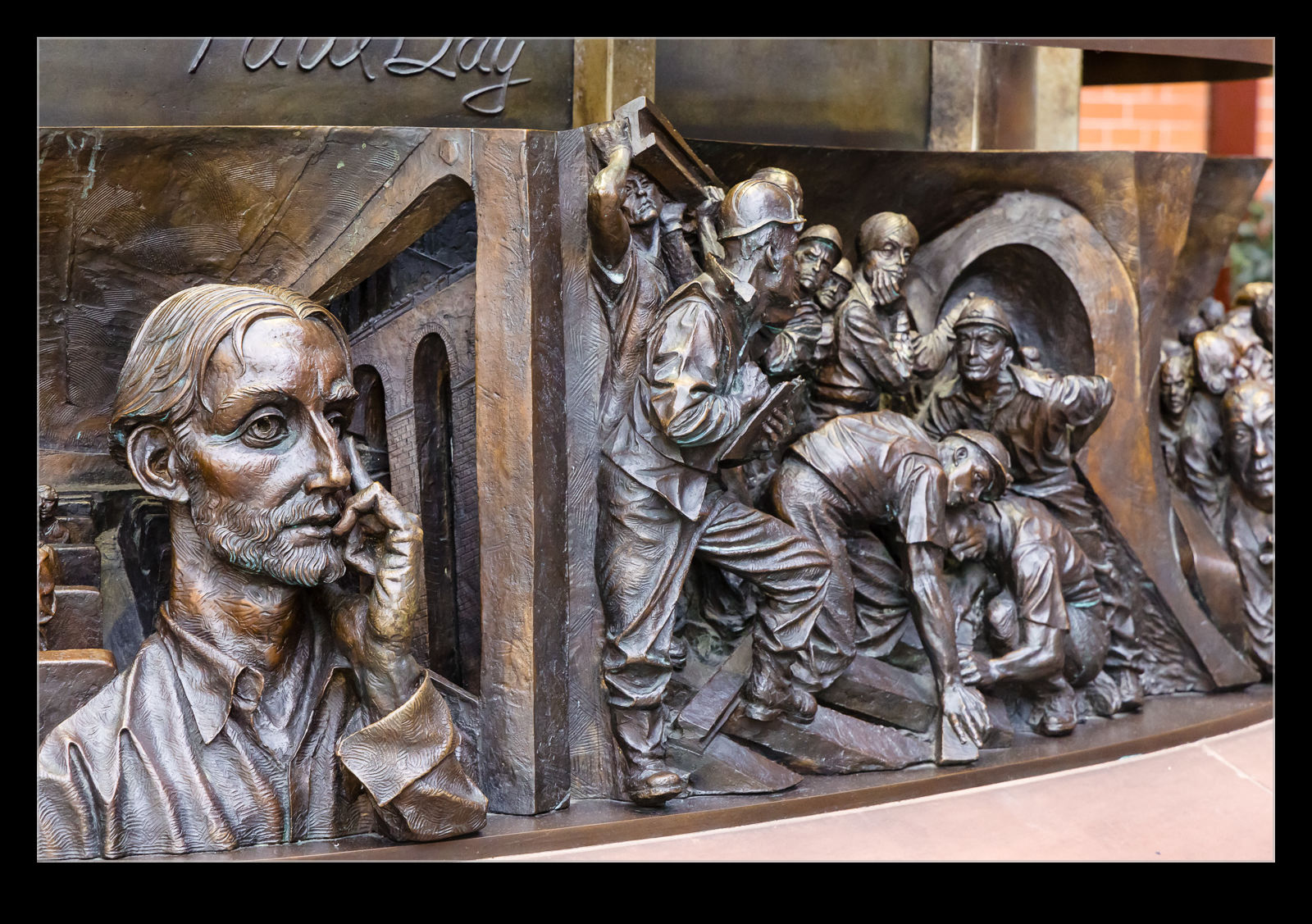 While walking through the station at St Pancras, I realized that there are more sculptures than I had thought. The one of Sir John Betjeman I knew of from previous visits, but the others were new to me. I rather like the stark nature of their textures and imagery. They have a rather aggressive feel to me which got my attention. It’s nice that public spaces make the effort to add art to the functional areas.
While walking through the station at St Pancras, I realized that there are more sculptures than I had thought. The one of Sir John Betjeman I knew of from previous visits, but the others were new to me. I rather like the stark nature of their textures and imagery. They have a rather aggressive feel to me which got my attention. It’s nice that public spaces make the effort to add art to the functional areas.
Tag Archives: Station
Clifton Rocks Railway
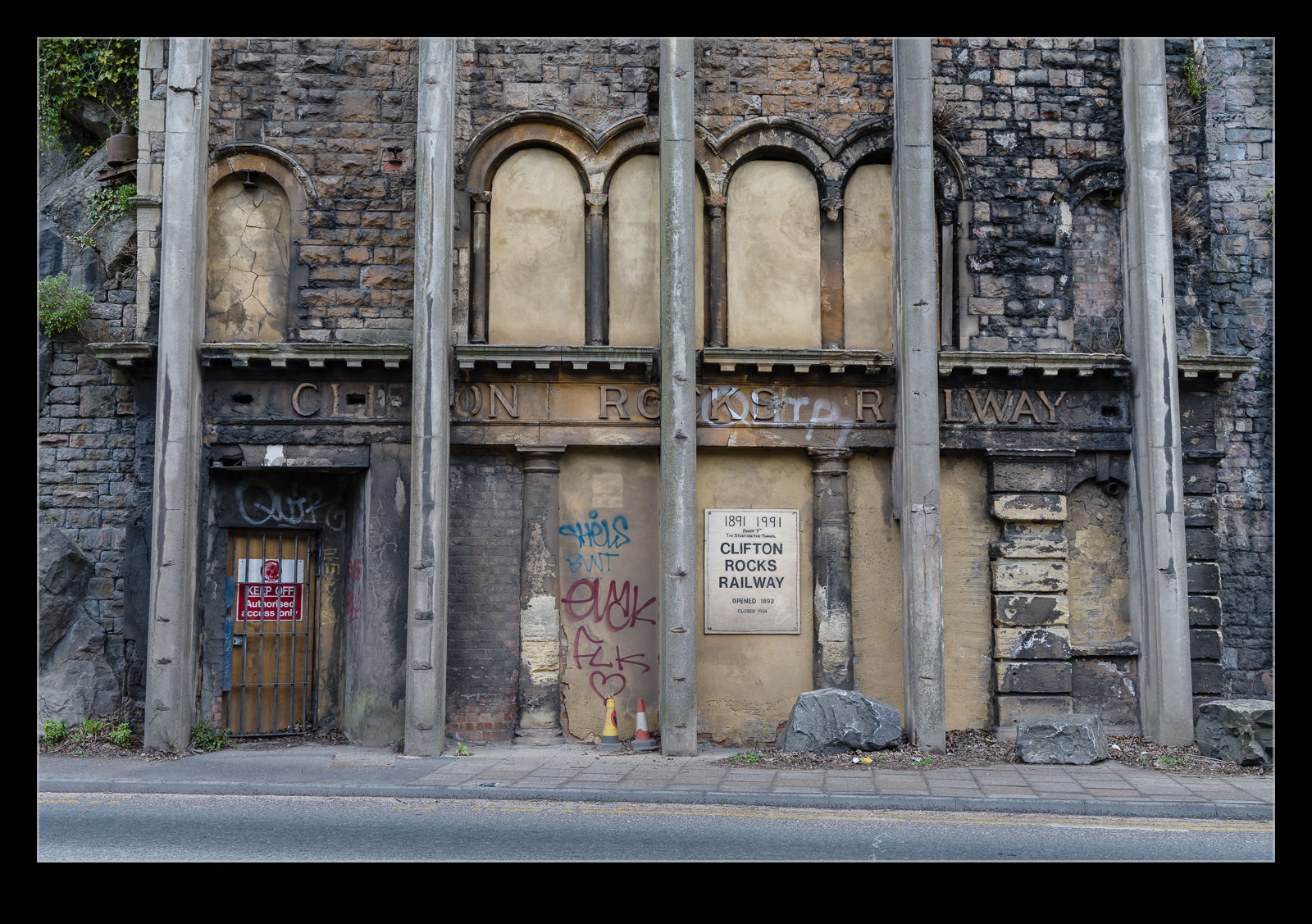 The area of Bristol known as Clifton sits on the top of the hill overlooking the Avon. To get from the water to Clifton is quite a climb. These days you would drive up there but, in the days, when vessels would be bringing passengers in by boat along the river, an alternative was required. The Clifton Rocks Railway was the solution. This was a funicular railway that ran in a tunnel from alongside the river up to near the suspension bridge.
The area of Bristol known as Clifton sits on the top of the hill overlooking the Avon. To get from the water to Clifton is quite a climb. These days you would drive up there but, in the days, when vessels would be bringing passengers in by boat along the river, an alternative was required. The Clifton Rocks Railway was the solution. This was a funicular railway that ran in a tunnel from alongside the river up to near the suspension bridge.
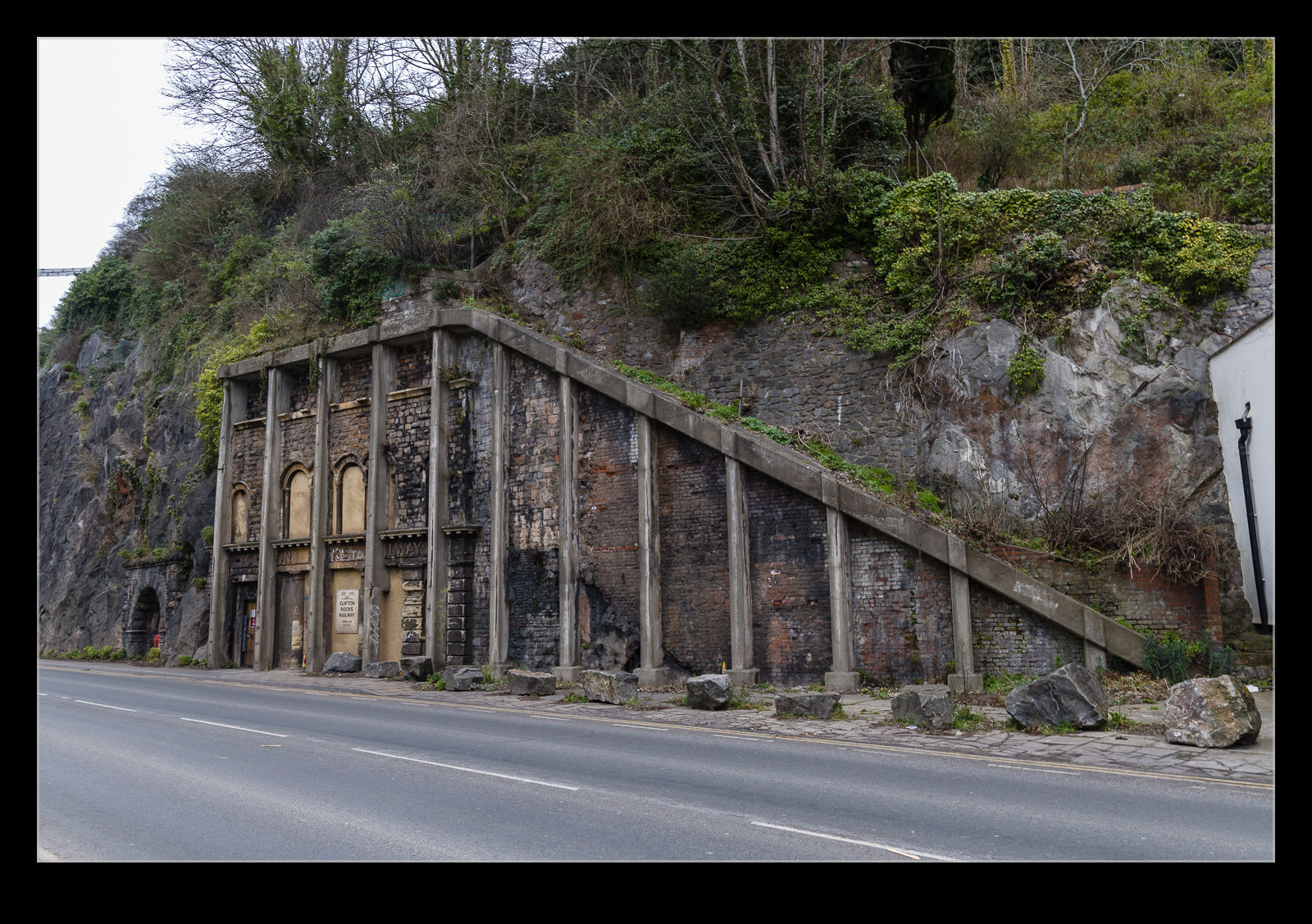 Built in the 1890s, it operated until the 1930s when the decline in passenger numbers meant it was no longer viable. The tunnels were used as office space during the Second World War with the BBC being one of the tenants and they continued to use the space into the 1960s. There is now an effort to restore aspects of the tunnels although the railway will never operate again given the usage the tunnels have had since service ended. The station at the bottom is still visible but is now alongside a busy roadway so might easily be missed as you drive past.
Built in the 1890s, it operated until the 1930s when the decline in passenger numbers meant it was no longer viable. The tunnels were used as office space during the Second World War with the BBC being one of the tenants and they continued to use the space into the 1960s. There is now an effort to restore aspects of the tunnels although the railway will never operate again given the usage the tunnels have had since service ended. The station at the bottom is still visible but is now alongside a busy roadway so might easily be missed as you drive past.
Elizabeth Line Station
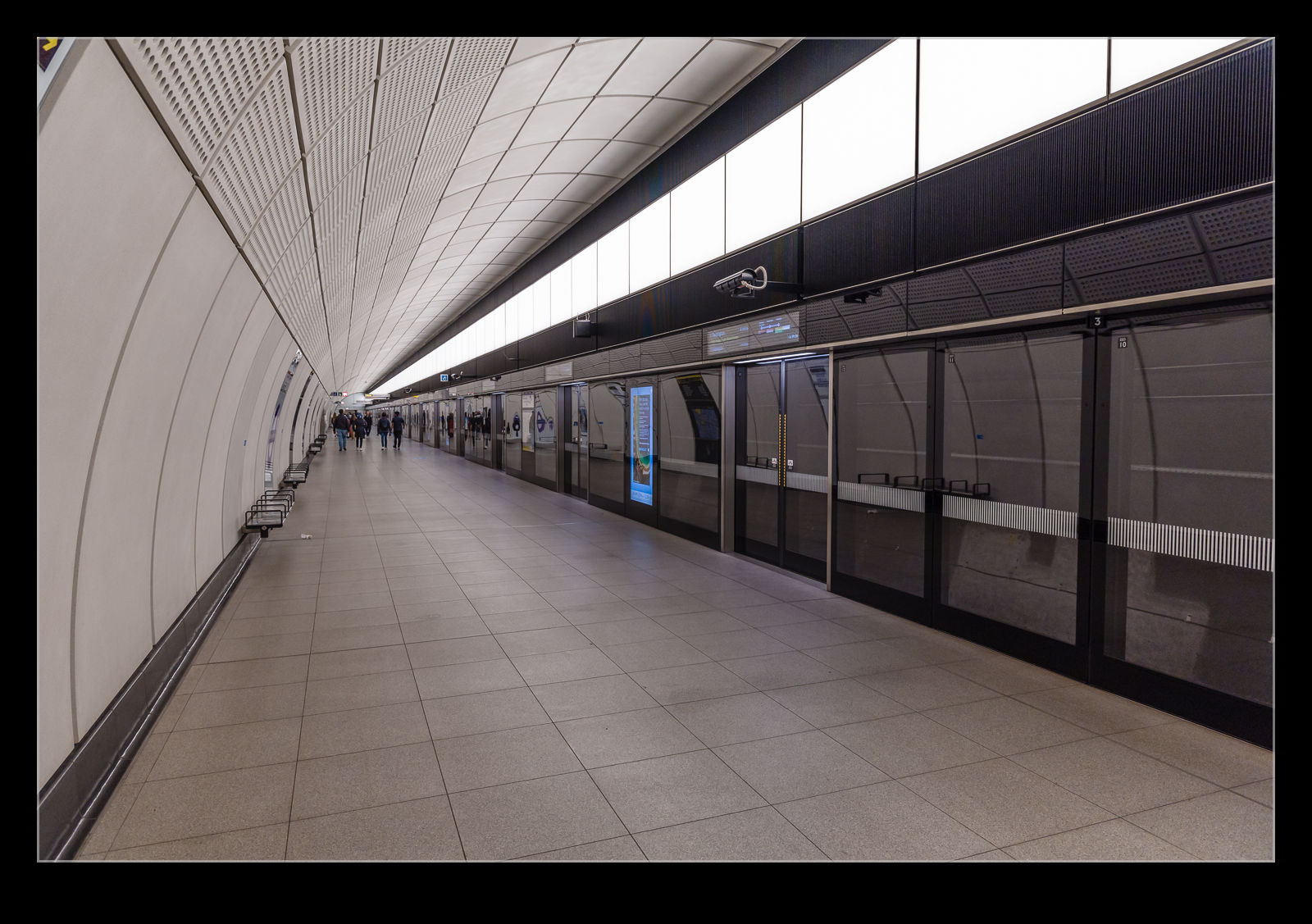 Last year, while we were staying in London, I got to take my first trip on the Elizabeth Line or what was known for a long time as Crossrail. This is a major addition to the transportation network of the town and appears to have been very successful. I only took one trip through the core of town and one to the airport. It was a very quick way to cover a journey that previously was a lot more drawn out. However, the thing that impressed me most was the stations. They are huge. The trains are long from the start, but they have built capacity to have them longer and the platforms are about 250m long as a result. You need to know which end to get out to make sure you don’t find yourself several blocks from where you intended when you get to the surface.
Last year, while we were staying in London, I got to take my first trip on the Elizabeth Line or what was known for a long time as Crossrail. This is a major addition to the transportation network of the town and appears to have been very successful. I only took one trip through the core of town and one to the airport. It was a very quick way to cover a journey that previously was a lot more drawn out. However, the thing that impressed me most was the stations. They are huge. The trains are long from the start, but they have built capacity to have them longer and the platforms are about 250m long as a result. You need to know which end to get out to make sure you don’t find yourself several blocks from where you intended when you get to the surface.
Bothell’s New Fire Station
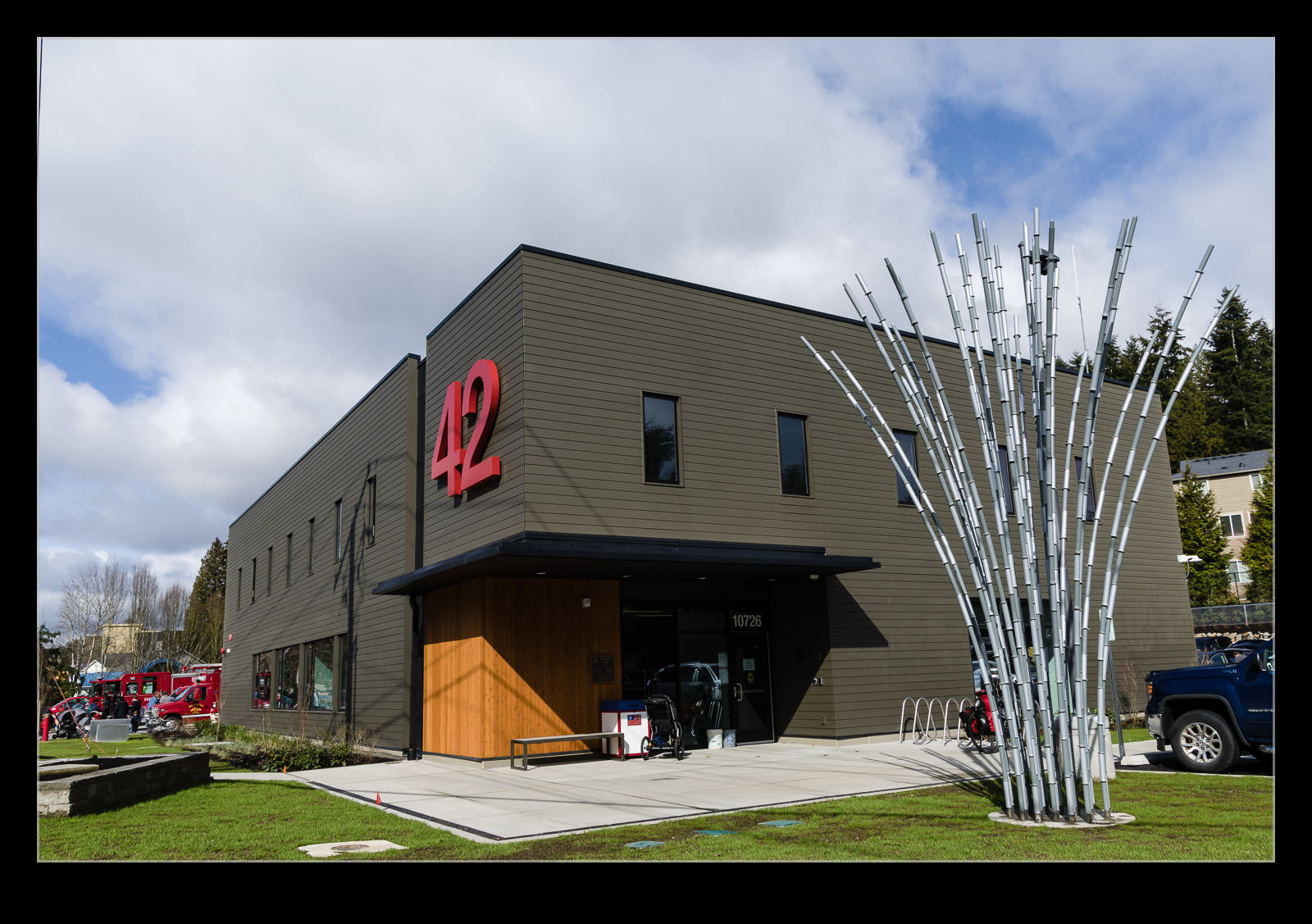 One of the routes that I take when riding my bike takes me through the center of Bothell – a town next to ours. I would ride past the old fire station but hadn’t been on the route for a while. There had been a sign saying a new fire station was going to be built and, when I recently rode by, not only was it finished but there was a sign outside saying that they were planning to have an open house to celebrate the opening. I figured this might be interesting.
One of the routes that I take when riding my bike takes me through the center of Bothell – a town next to ours. I would ride past the old fire station but hadn’t been on the route for a while. There had been a sign saying a new fire station was going to be built and, when I recently rode by, not only was it finished but there was a sign outside saying that they were planning to have an open house to celebrate the opening. I figured this might be interesting.
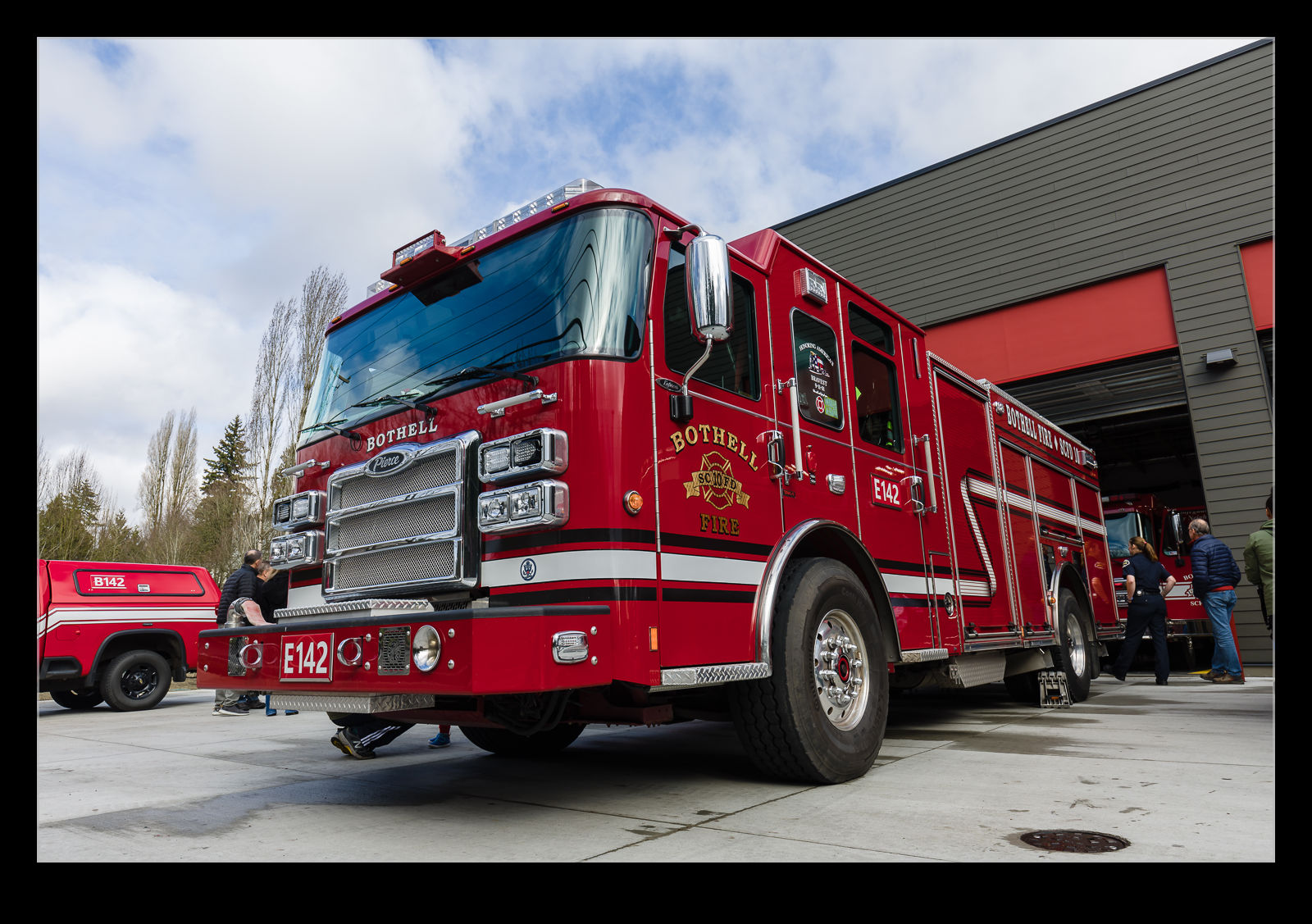 The open house was scheduled for a Saturday morning so was not going to be a long event but that didn’t deter people from showing up. There were plenty of people there when I arrived – indeed some were already leaving having got there earlier. As I stayed around, it got a lot busier. So many people came to have a look around. Many of them brought their kids along to see the station but I suspect the kids were less interested than the parents were.
The open house was scheduled for a Saturday morning so was not going to be a long event but that didn’t deter people from showing up. There were plenty of people there when I arrived – indeed some were already leaving having got there earlier. As I stayed around, it got a lot busier. So many people came to have a look around. Many of them brought their kids along to see the station but I suspect the kids were less interested than the parents were.
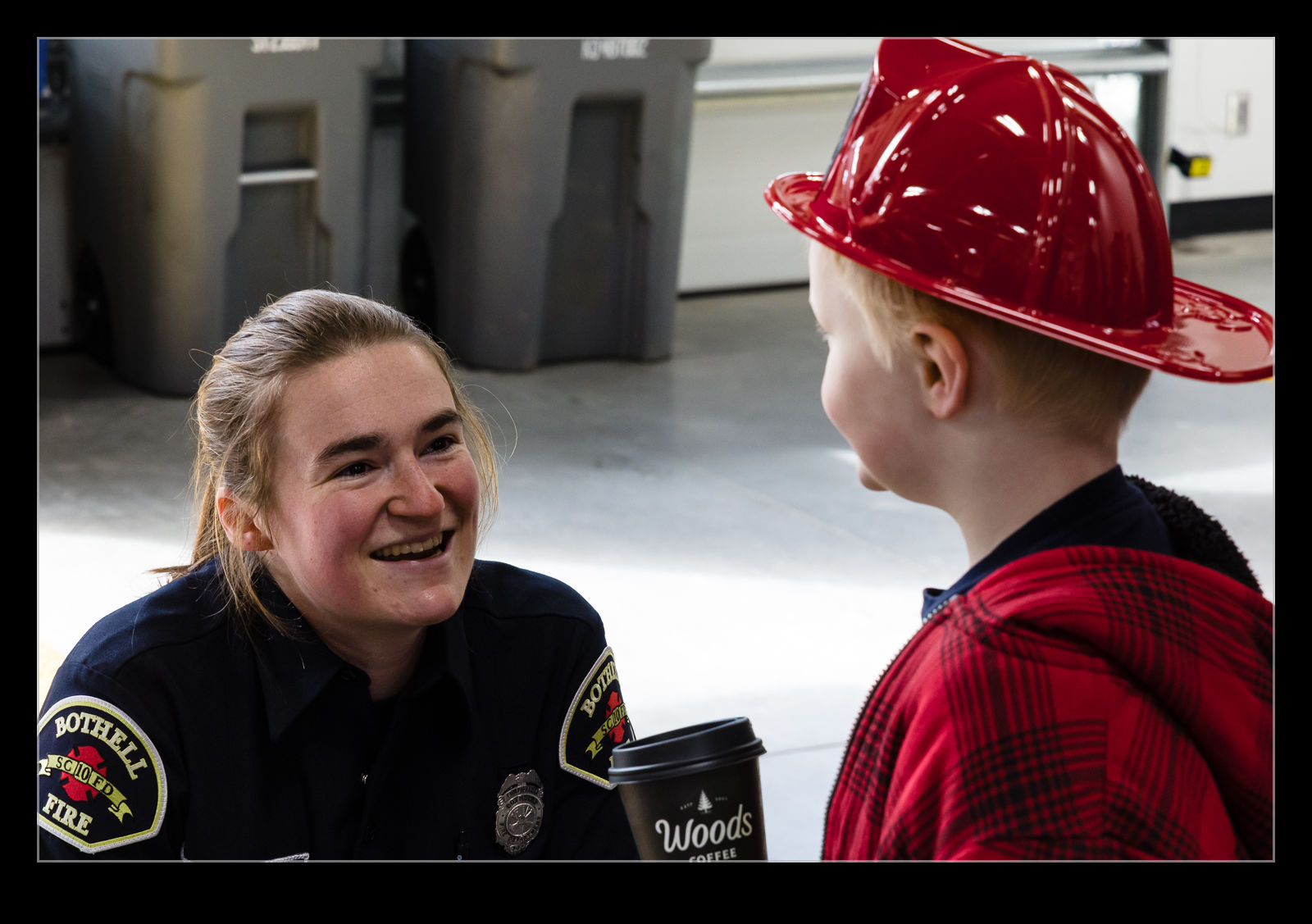 The appliances were on display in the main open space of the station with fire trucks, ambulances and assorted support vehicles for people to climb all over. These were of interest to me but I was almost more interested in the stuff around them. Storage for the equipment, venting pipes for the vehicle exhausts so they could run indoors, things like that. The one thing that they didn’t have was a pole! I guess those are no longer a standard of fire stations!
The appliances were on display in the main open space of the station with fire trucks, ambulances and assorted support vehicles for people to climb all over. These were of interest to me but I was almost more interested in the stuff around them. Storage for the equipment, venting pipes for the vehicle exhausts so they could run indoors, things like that. The one thing that they didn’t have was a pole! I guess those are no longer a standard of fire stations!
 There was much more to the station to see, though. You were able to walk throughout the building and, while there were some tours explaining everything to people, I was happier going at my own speed and avoiding the worst of the congestion. The operations space where they could control the delivery of whatever services were needed was pretty compact but efficient. It was alongside a selection of offices for some of the leadership. Across from that was a gym where the crews could work out if they wanted.
There was much more to the station to see, though. You were able to walk throughout the building and, while there were some tours explaining everything to people, I was happier going at my own speed and avoiding the worst of the congestion. The operations space where they could control the delivery of whatever services were needed was pretty compact but efficient. It was alongside a selection of offices for some of the leadership. Across from that was a gym where the crews could work out if they wanted.
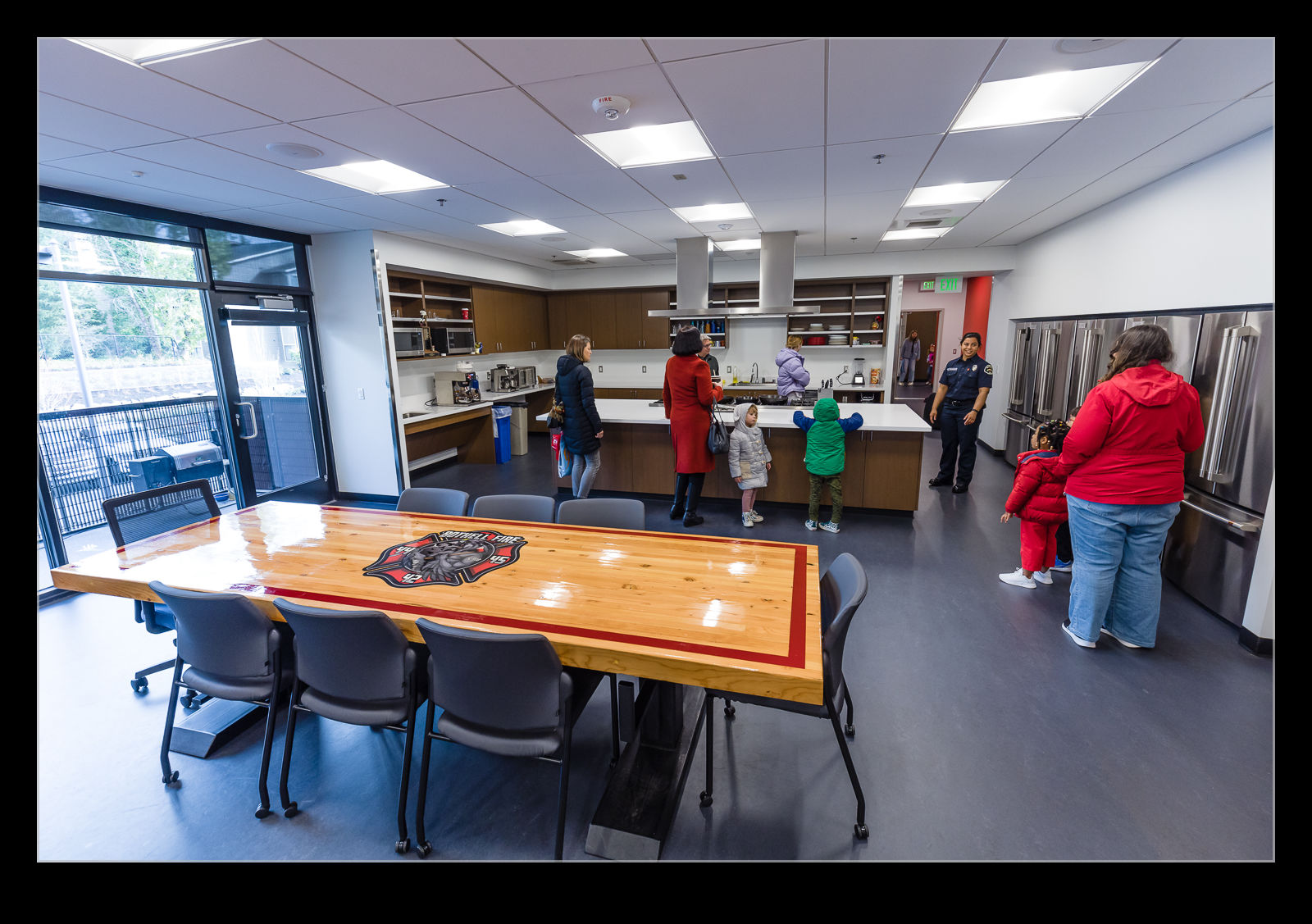 Heading upstairs and we got to the more domestic side of things. There was a large kitchen and dining area. Large cooking surfaces with big skillets were a sign of what feeding a shift involves. There were multiple refrigerators along one wall with each labeled for the shift that utilized it. I wonder whether there are ever issues with one shift pinching food from another! Next to that was a TV room with big recliners arrayed around the TV – each on embroidered with the logo of the fire station. This logo showed up in various places.
Heading upstairs and we got to the more domestic side of things. There was a large kitchen and dining area. Large cooking surfaces with big skillets were a sign of what feeding a shift involves. There were multiple refrigerators along one wall with each labeled for the shift that utilized it. I wonder whether there are ever issues with one shift pinching food from another! Next to that was a TV room with big recliners arrayed around the TV – each on embroidered with the logo of the fire station. This logo showed up in various places.
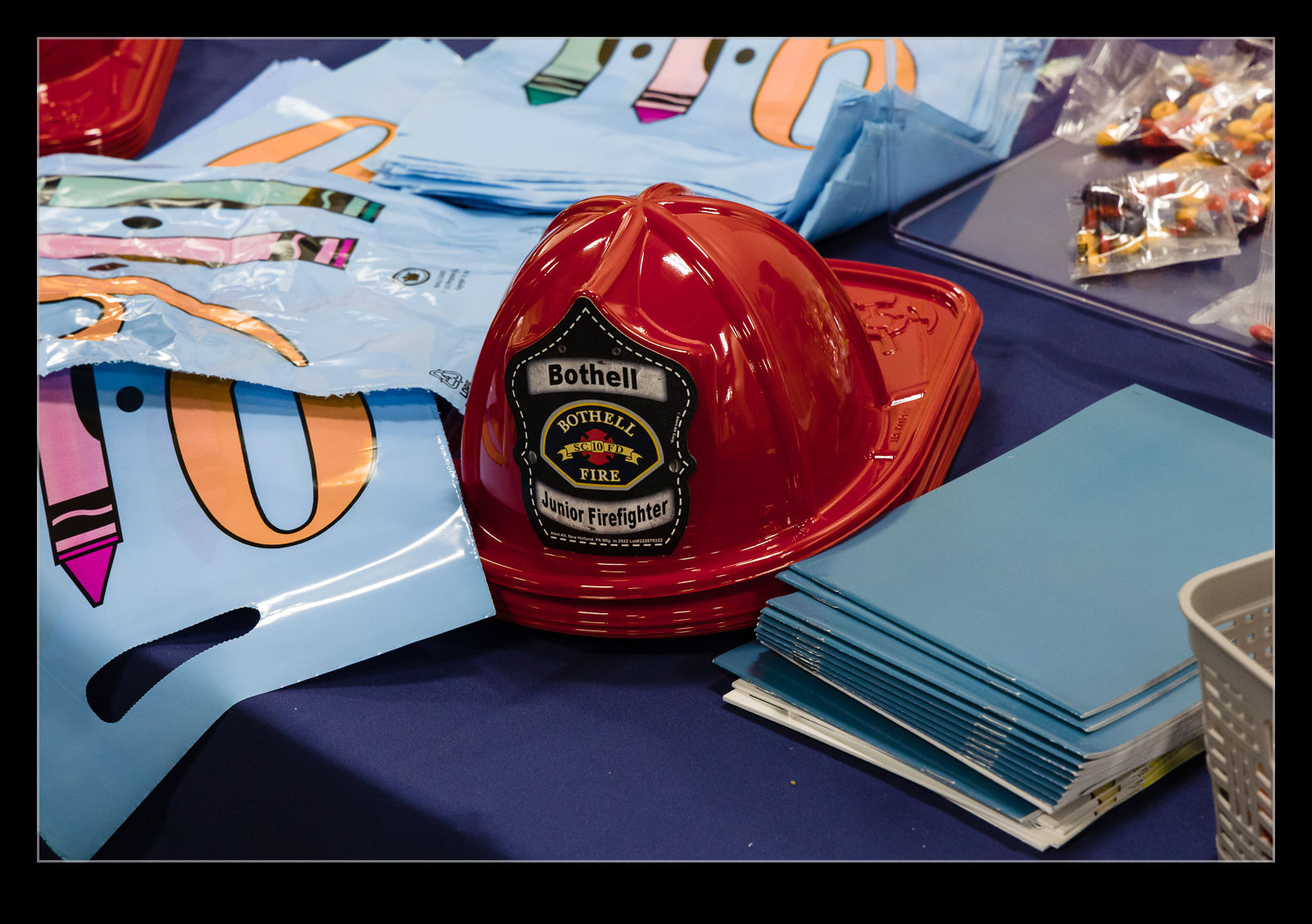 Next was the accommodation space. There were bunk rooms available for the crews to use. I understood that they would be on watch for long periods so could eat, relax, sleep, shower and work out while they were not required for operations. The bunk rooms were compact and basic but looked like they would do the job nicely.
Next was the accommodation space. There were bunk rooms available for the crews to use. I understood that they would be on watch for long periods so could eat, relax, sleep, shower and work out while they were not required for operations. The bunk rooms were compact and basic but looked like they would do the job nicely.
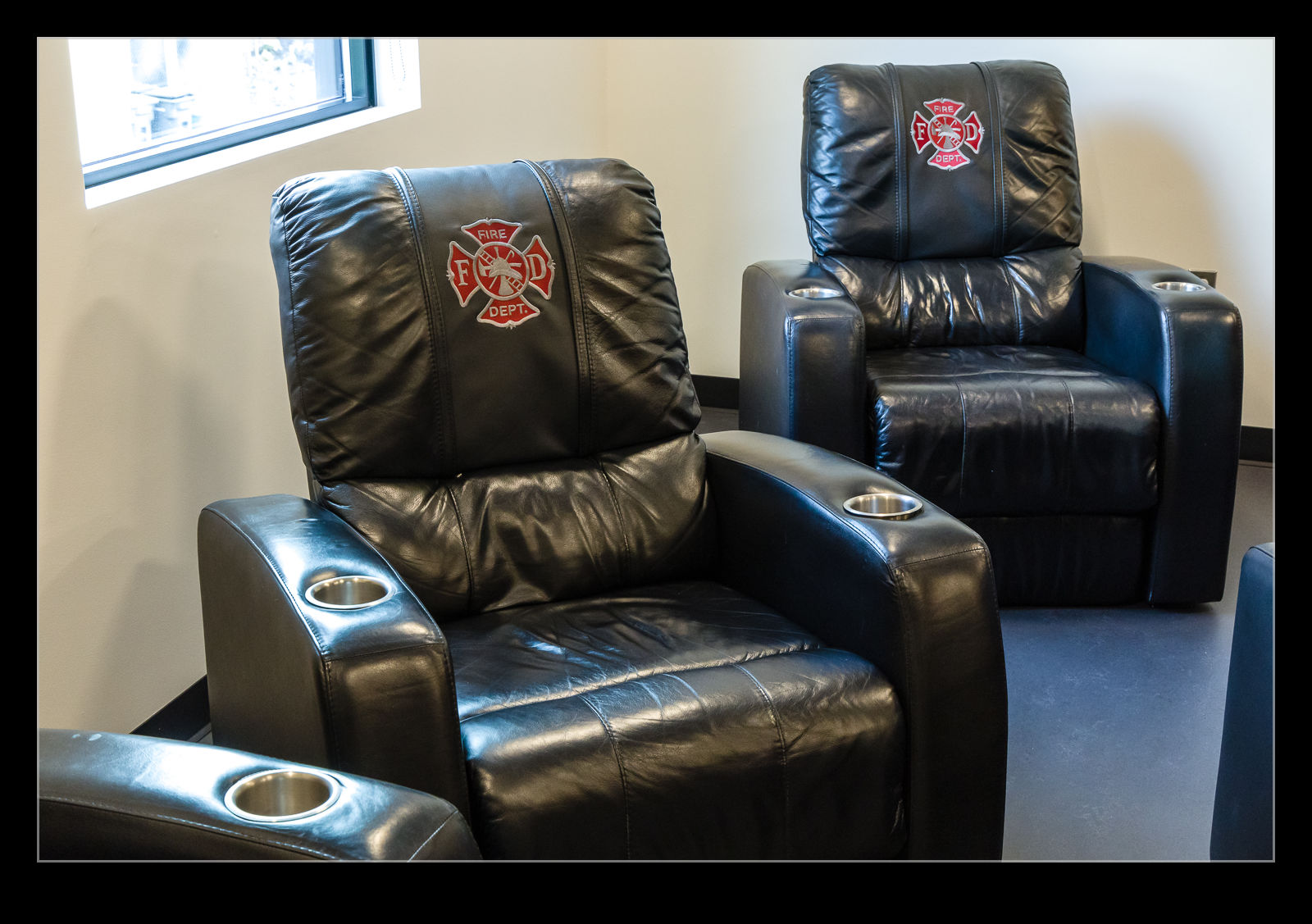 It was interesting to see what a modern fire station involves. I hadn’t really given it much thought before and seeing the layout gave me a new appreciation for what the crews’ lives can be like. The new building was clearly a nice upgrade for the facility and it was functional but not unattractive. They even had some sculpture work outside. A lot of effort went in to putting the place together. I hope they find it beneficial.
It was interesting to see what a modern fire station involves. I hadn’t really given it much thought before and seeing the layout gave me a new appreciation for what the crews’ lives can be like. The new building was clearly a nice upgrade for the facility and it was functional but not unattractive. They even had some sculpture work outside. A lot of effort went in to putting the place together. I hope they find it beneficial.
Inside A Boiler
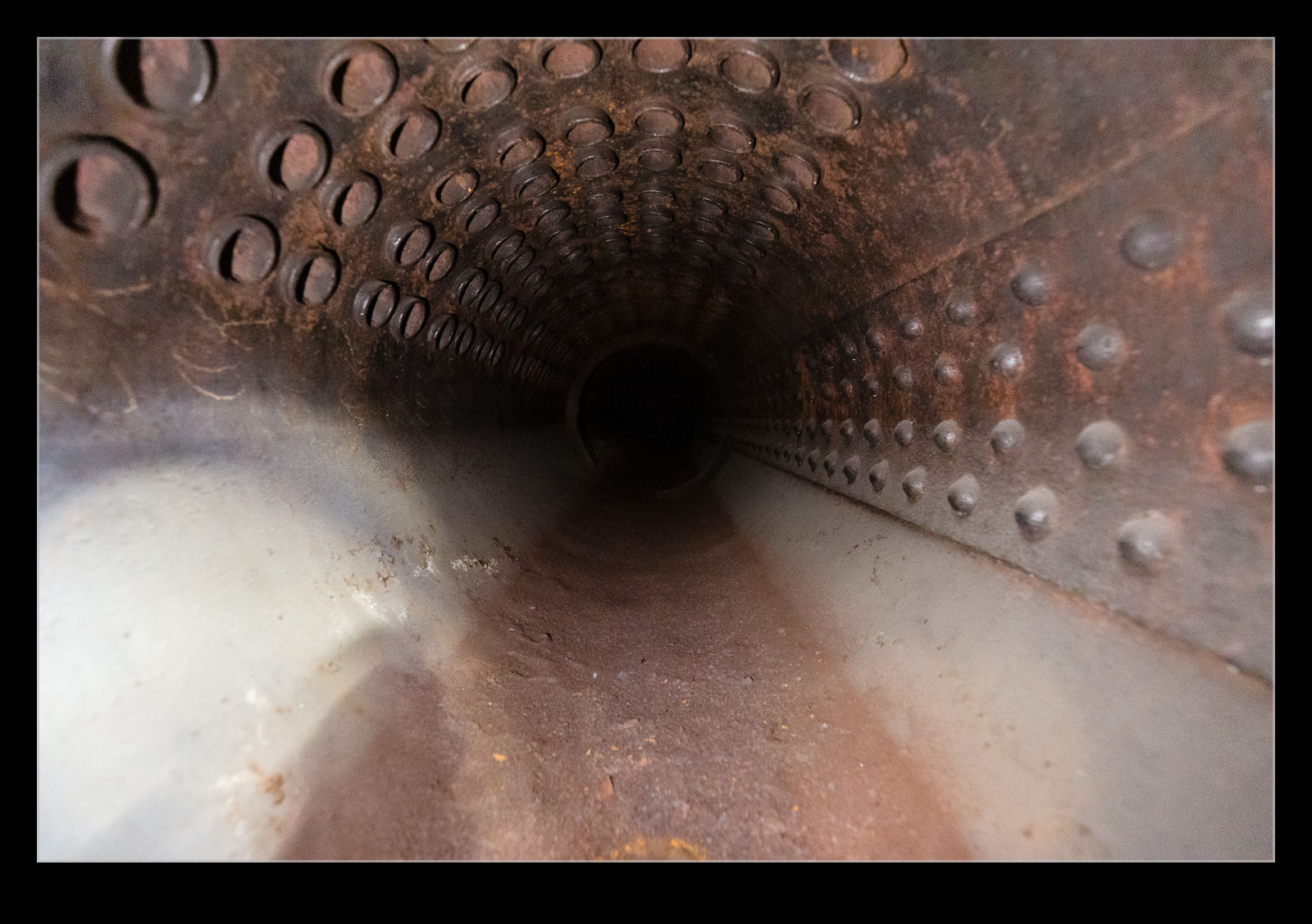 Within the Georgetown Steam Plant, one of the docents was keen to show off the details of the boilers. These were originally oil fired but, during the Second World War, they were converted to operate using coal. After the war, they were reverted back to oil and there are hardly any signs left of the coal configuration.
Within the Georgetown Steam Plant, one of the docents was keen to show off the details of the boilers. These were originally oil fired but, during the Second World War, they were converted to operate using coal. After the war, they were reverted back to oil and there are hardly any signs left of the coal configuration.
 The layout of the pipes within the boiler is quite complex. It is designed to create a circulating flow of the water in the pipes and create the stream at the top of the boiler to feed the turbines. These pipes lie in a triangular framework angled over the make everything operate as intended. These were assembled and the walls of the boilers were then constructed around them.
The layout of the pipes within the boiler is quite complex. It is designed to create a circulating flow of the water in the pipes and create the stream at the top of the boiler to feed the turbines. These pipes lie in a triangular framework angled over the make everything operate as intended. These were assembled and the walls of the boilers were then constructed around them.
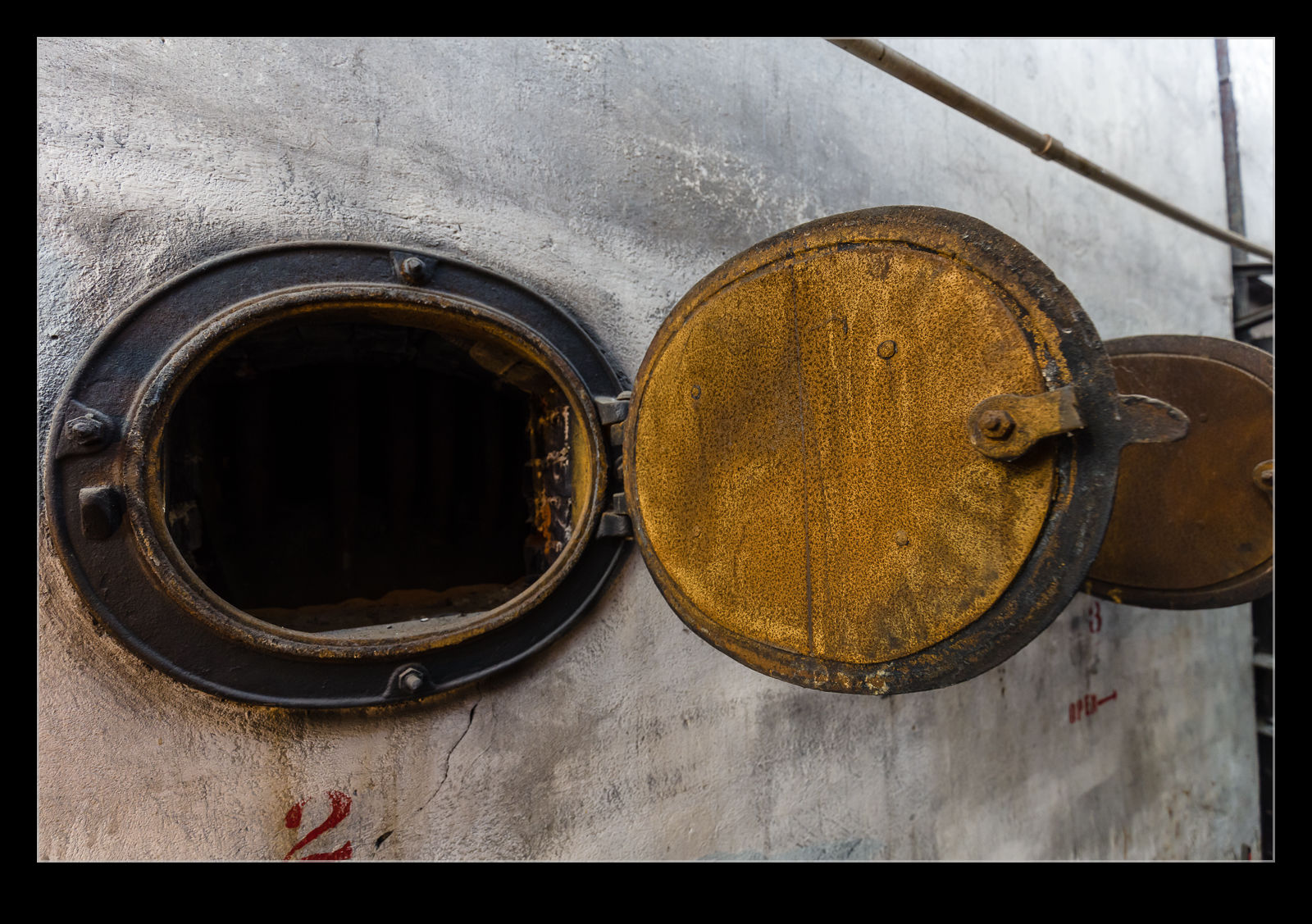 There are access hatches which allow you to see into the boiler and see the pipe arrangements. It is very dark in there and a flashlight is needed to see anything at all. The boiler walls are metallic but they are lined with fire bricks. These bricks had a limited life so there would be a time when they had to be replaced. People would have to climb in through the narrow hatches to knock out the old bricks and pass them out before installing the replacements. They would also have to clean off the pipe work exterior as this would accumulate debris from the hot gases of combustion.
There are access hatches which allow you to see into the boiler and see the pipe arrangements. It is very dark in there and a flashlight is needed to see anything at all. The boiler walls are metallic but they are lined with fire bricks. These bricks had a limited life so there would be a time when they had to be replaced. People would have to climb in through the narrow hatches to knock out the old bricks and pass them out before installing the replacements. They would also have to clean off the pipe work exterior as this would accumulate debris from the hot gases of combustion.
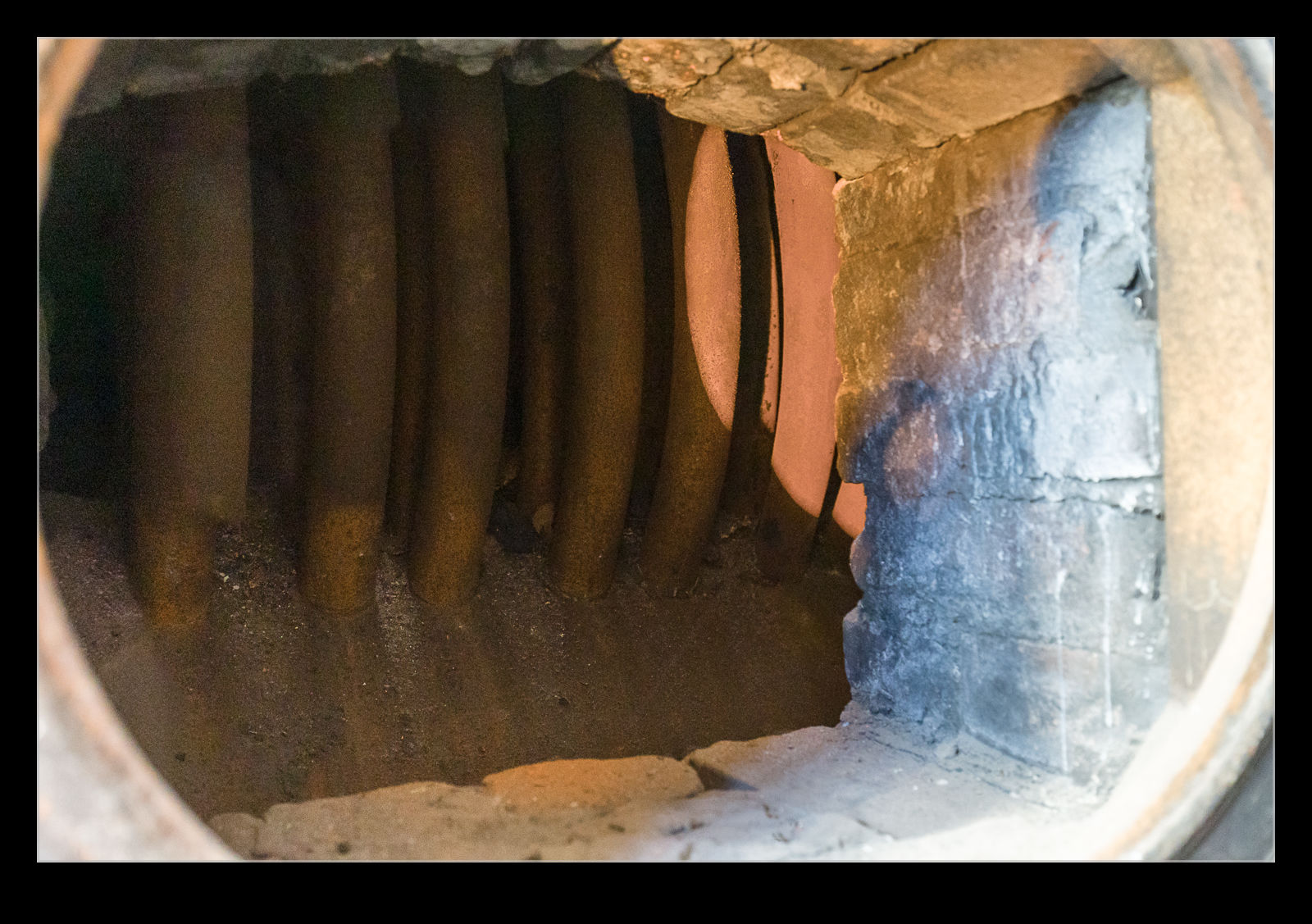 Accessing the interior of these boilers looks extremely unpleasant. It would be far too claustrophobic for me to think about and that is before considering the hard work in a hostile environment. These guys were tougher than me! The boilers are in pairs with a gap between each pair so I guess they would have to close down both parts of the pair to allow a temperature that was acceptable for entry. Even then, I doubt it was a good place to work.
Accessing the interior of these boilers looks extremely unpleasant. It would be far too claustrophobic for me to think about and that is before considering the hard work in a hostile environment. These guys were tougher than me! The boilers are in pairs with a gap between each pair so I guess they would have to close down both parts of the pair to allow a temperature that was acceptable for entry. Even then, I doubt it was a good place to work.
Georgetown Steam Plant Visit
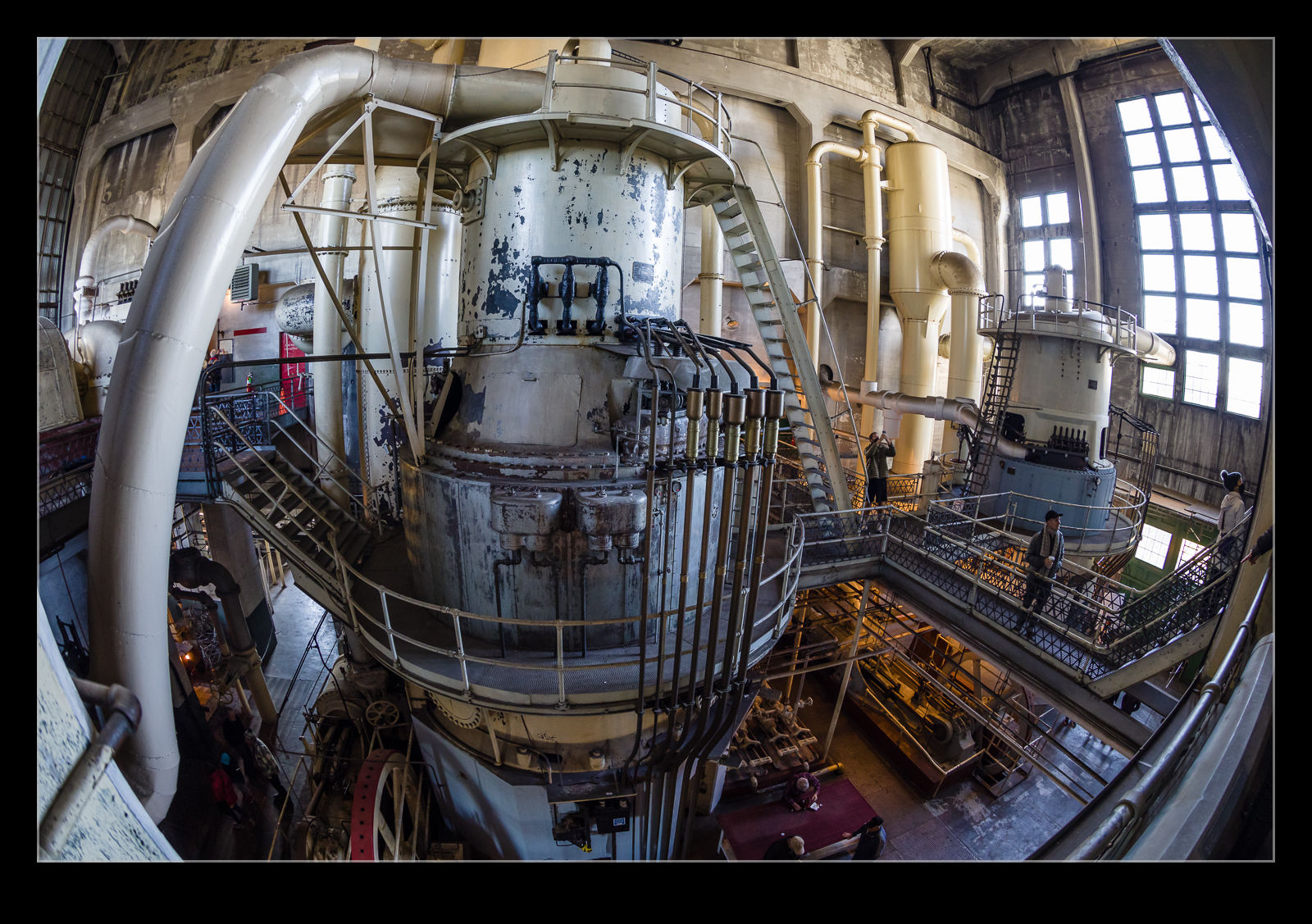 Near the north end of Boeing Field is the old Georgetown Steam Plant. This is an old power station that was decommissioned decades ago. I had been curious to see what it was like inside. I had thought about going a while back and then the pandemic put paid to any visits for a couple of years. The opening hours have now been established and they open on the second Saturday of each month. That proved problematic for a while as that clashed with travels or other plans. Consequently, I put the first opening in my calendar and tried my best to make sure I could go.
Near the north end of Boeing Field is the old Georgetown Steam Plant. This is an old power station that was decommissioned decades ago. I had been curious to see what it was like inside. I had thought about going a while back and then the pandemic put paid to any visits for a couple of years. The opening hours have now been established and they open on the second Saturday of each month. That proved problematic for a while as that clashed with travels or other plans. Consequently, I put the first opening in my calendar and tried my best to make sure I could go.
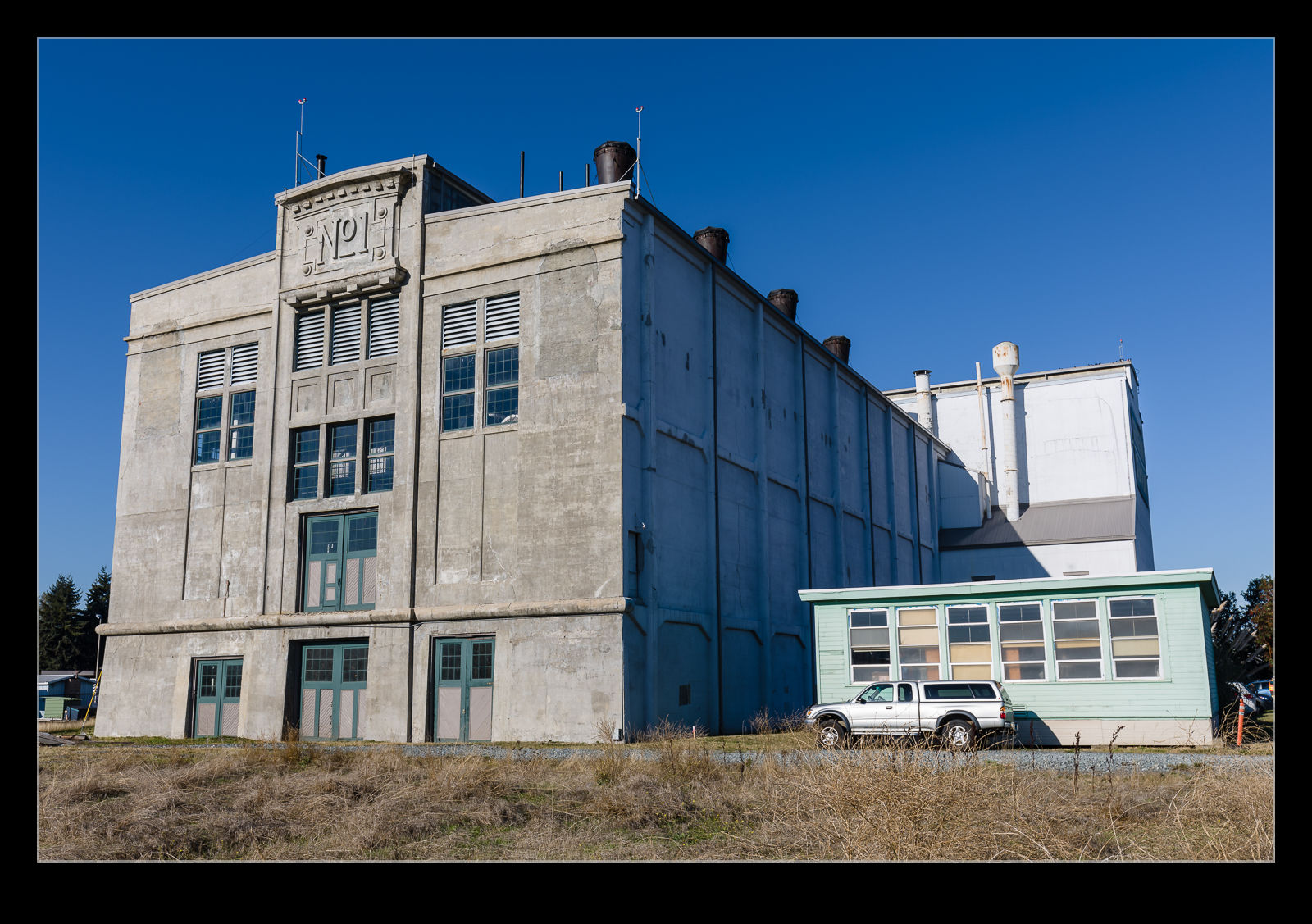 The Saturday came around and it was a gloriously sunny day. This shouldn’t matter much since I was going to be indoors but it does make for a nicer day to be out anyway. It was due to open at 10am so I decided to get there right at the beginning. Turned out this was a good idea. The parking lot was already looking pretty full and more were arriving. I have no idea why it was so busy. Sure, a nice day encourages people to go out but how many people see a sunny day and think “let’s go to a decommissioned power plant”? I asked a docent whether this was normal. He said they normally get about 30 people over the day and they had four tours of 50 people booked plus those, like me, that didn’t take the tour!
The Saturday came around and it was a gloriously sunny day. This shouldn’t matter much since I was going to be indoors but it does make for a nicer day to be out anyway. It was due to open at 10am so I decided to get there right at the beginning. Turned out this was a good idea. The parking lot was already looking pretty full and more were arriving. I have no idea why it was so busy. Sure, a nice day encourages people to go out but how many people see a sunny day and think “let’s go to a decommissioned power plant”? I asked a docent whether this was normal. He said they normally get about 30 people over the day and they had four tours of 50 people booked plus those, like me, that didn’t take the tour!
 The power plant was built at the beginning of the 20th century. It had three steam turbines of different vintages, powers and technologies. The first two are vertical and the third horizontal. These are fed from a large boiler room. There are balconies with the control electronics which you can see but are not yet accessible. I was happy to let the tours concentrate people in various locations which meant it was quieter wherever they weren’t so I could wander around casually.
The power plant was built at the beginning of the 20th century. It had three steam turbines of different vintages, powers and technologies. The first two are vertical and the third horizontal. These are fed from a large boiler room. There are balconies with the control electronics which you can see but are not yet accessible. I was happy to let the tours concentrate people in various locations which meant it was quieter wherever they weren’t so I could wander around casually.
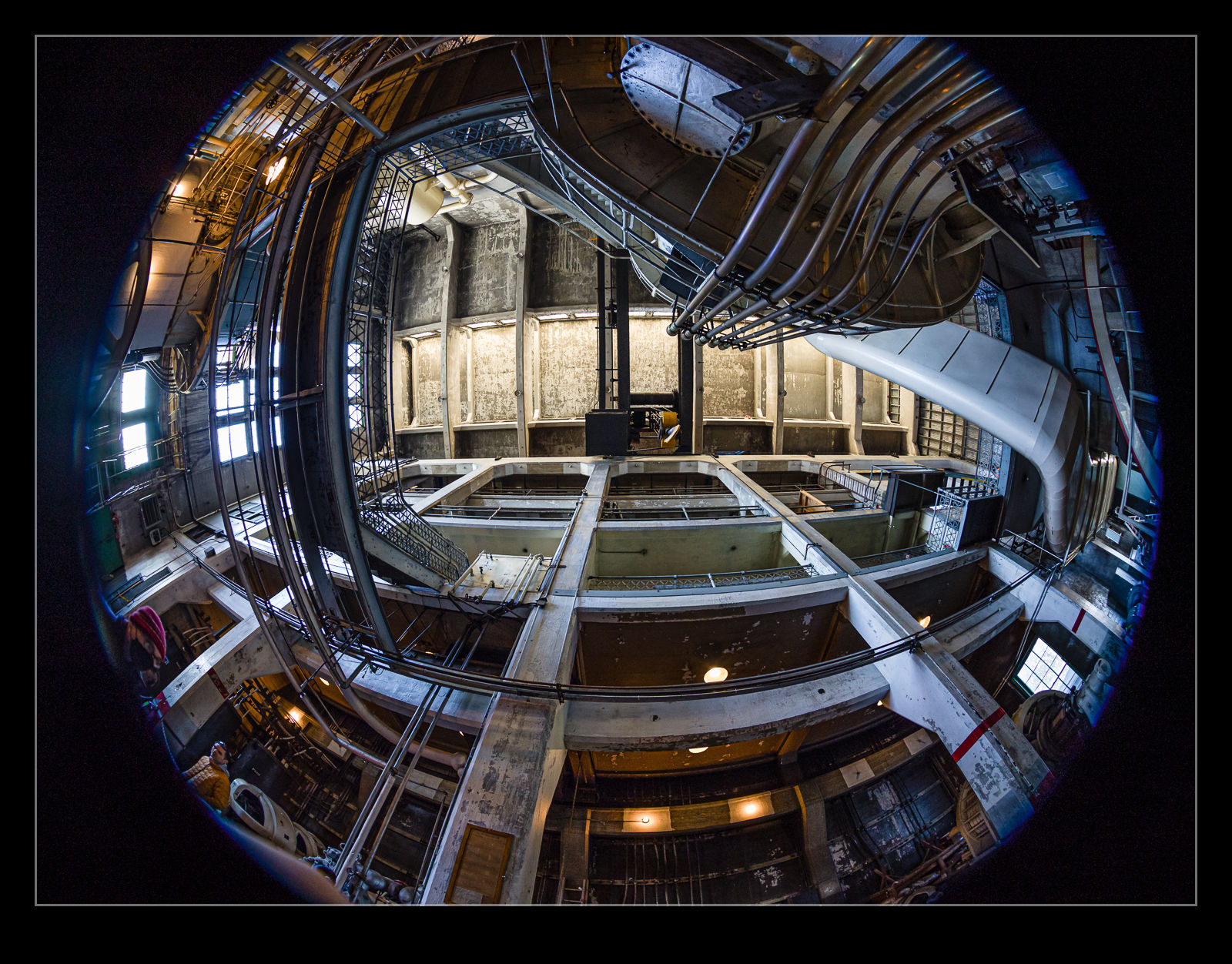 I had figured wide angle was going to be my friend in the building so had a wide zoom and a fisheye zoom with me. I used the fish a little initially but soon concluded it wasn’t that useful to me so I swapped it out with the 70-200 to allow me to get some detail shots of the machinery. Older machinery has a lot of character with polished metals, complex mechanisms and multiple gauges. It is a great look in to a bygone era.
I had figured wide angle was going to be my friend in the building so had a wide zoom and a fisheye zoom with me. I used the fish a little initially but soon concluded it wasn’t that useful to me so I swapped it out with the 70-200 to allow me to get some detail shots of the machinery. Older machinery has a lot of character with polished metals, complex mechanisms and multiple gauges. It is a great look in to a bygone era.
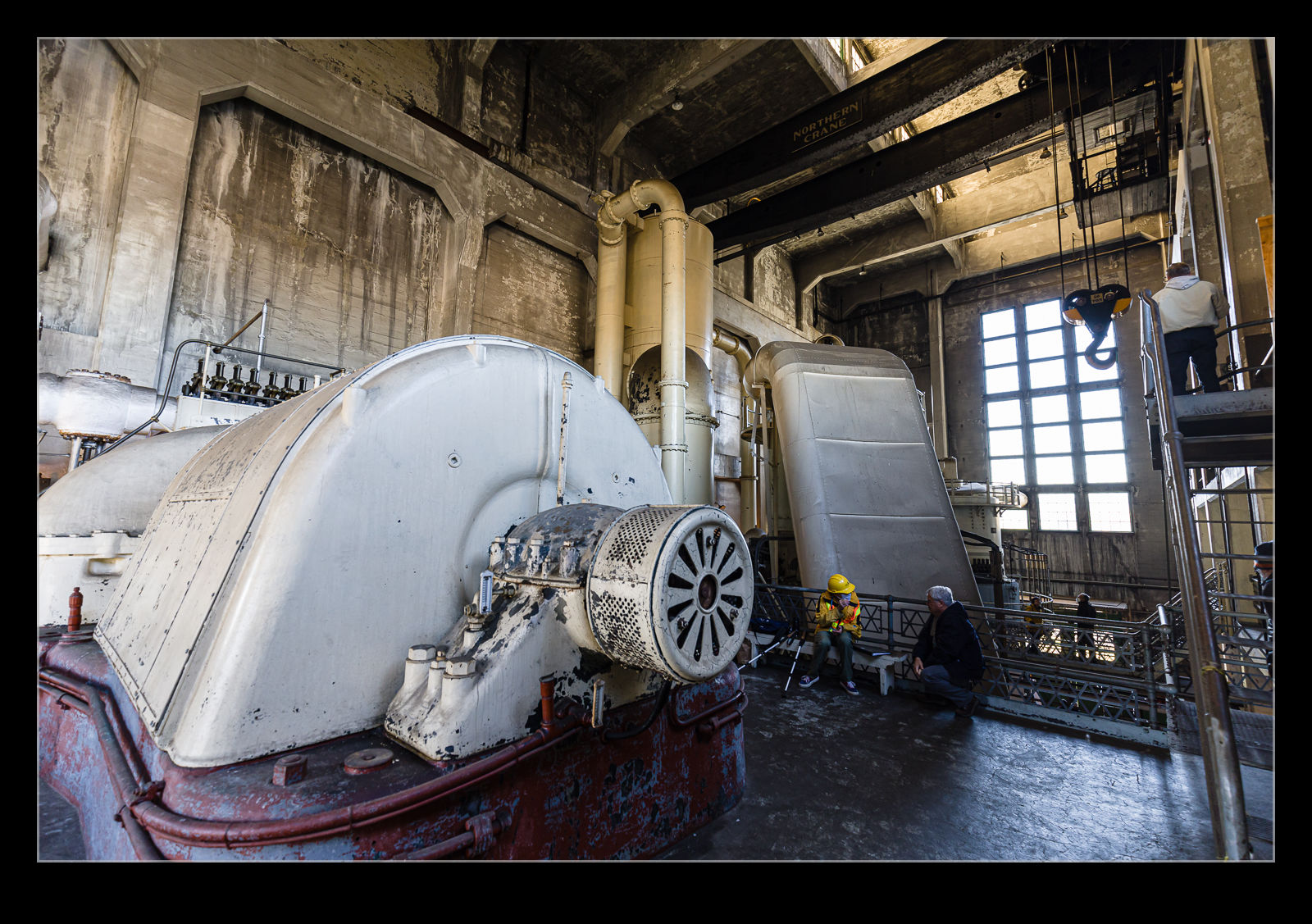 These shots are few of the overall layout of the building. There are some details from within the plant that will have their own posts to come so I can focus on them. I don’t want to try and squeeze it all in to one post and lose some of the curious elements in the larger story.
These shots are few of the overall layout of the building. There are some details from within the plant that will have their own posts to come so I can focus on them. I don’t want to try and squeeze it all in to one post and lose some of the curious elements in the larger story.
Mukilteo Rail Station
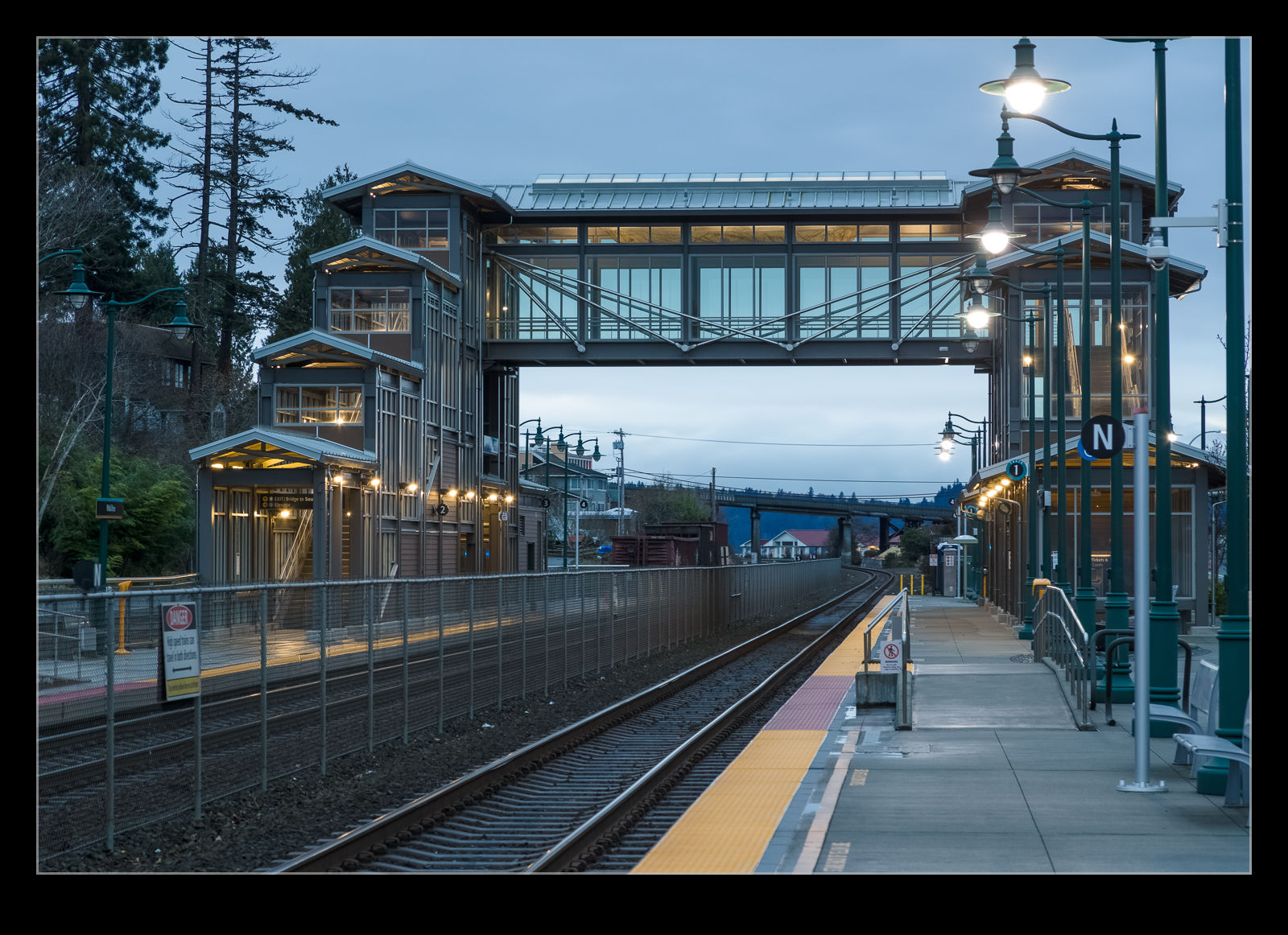 In all of my visits to the waterfront at Mukilteo, it would have been neglectful if I hadn’t had a quick poke around at the railroad station. This is for Sounder commuter rail trains to Seattle and is across from the new ferry terminal. It will be interesting to see whether WSDOT’s Amtrak Cascades trains stop there in the future to connect with the ferries but currently they do not (and, at the time of writing, the Cascades services north of Seattle are suspended anyway.)
In all of my visits to the waterfront at Mukilteo, it would have been neglectful if I hadn’t had a quick poke around at the railroad station. This is for Sounder commuter rail trains to Seattle and is across from the new ferry terminal. It will be interesting to see whether WSDOT’s Amtrak Cascades trains stop there in the future to connect with the ferries but currently they do not (and, at the time of writing, the Cascades services north of Seattle are suspended anyway.)
 The station is not that old since the Sounder service has only been around since the 2000s. Consequently, it is a nicely thought out design rather than an old station that has been upgraded. It includes some artwork with a local theme with stone sculptures of local boat designs. A footbridge takes you over the tracks to the far platforms. I doubt I will ever have the need to use it but it was fun to look around on a quiet weekend.
The station is not that old since the Sounder service has only been around since the 2000s. Consequently, it is a nicely thought out design rather than an old station that has been upgraded. It includes some artwork with a local theme with stone sculptures of local boat designs. A footbridge takes you over the tracks to the far platforms. I doubt I will ever have the need to use it but it was fun to look around on a quiet weekend.
Aldeburgh Lifeboat
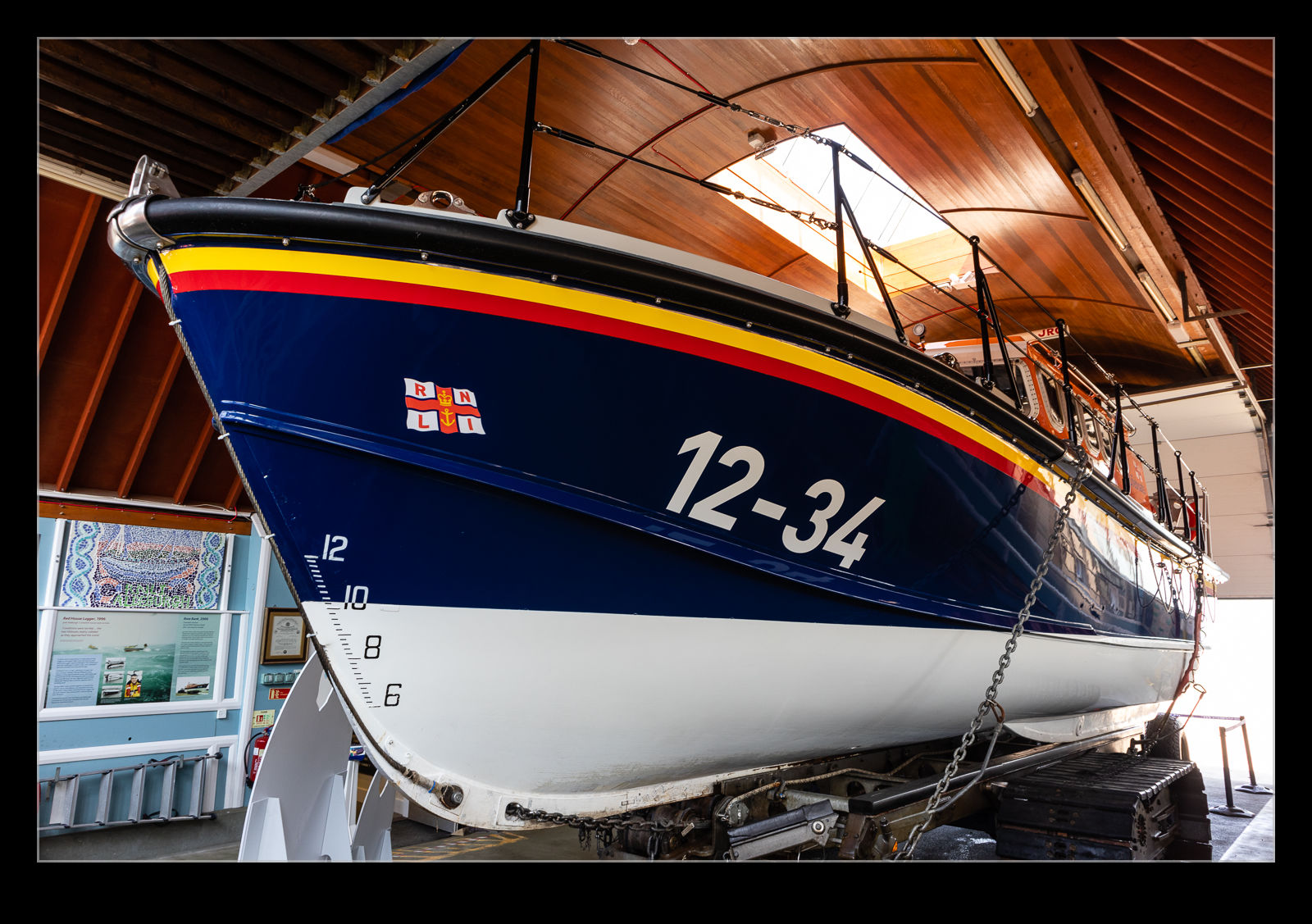 Our UK trip had a bit of an RNLI feel to it. We spent some time at the Bembridge lifeboat station as showed up here and here. When we got to Aldeburgh, it turned out that they also had a lifeboat station. It was quite a modern facility and very different to the Bembridge station. Bembridge has a boathouse with a slipway straight in to the water. Aldeburgh has a trailer mounted boat with a tractor unit to take it down across the shingle to the water’s edge.
Our UK trip had a bit of an RNLI feel to it. We spent some time at the Bembridge lifeboat station as showed up here and here. When we got to Aldeburgh, it turned out that they also had a lifeboat station. It was quite a modern facility and very different to the Bembridge station. Bembridge has a boathouse with a slipway straight in to the water. Aldeburgh has a trailer mounted boat with a tractor unit to take it down across the shingle to the water’s edge.
 The building has space for the boat on one side and the tractor on the other. There is also an inshore boat. The facility seems to be pretty modern with some nice space for the crew to keep their equipment and change when they need to go into service. It was a lot quieter than the Bembridge station with only the occasional visitor but worth a look if you happen to be on this part of the Suffolk coast.
The building has space for the boat on one side and the tractor on the other. There is also an inshore boat. The facility seems to be pretty modern with some nice space for the crew to keep their equipment and change when they need to go into service. It was a lot quieter than the Bembridge station with only the occasional visitor but worth a look if you happen to be on this part of the Suffolk coast.
Snoqualmie Historic Trains
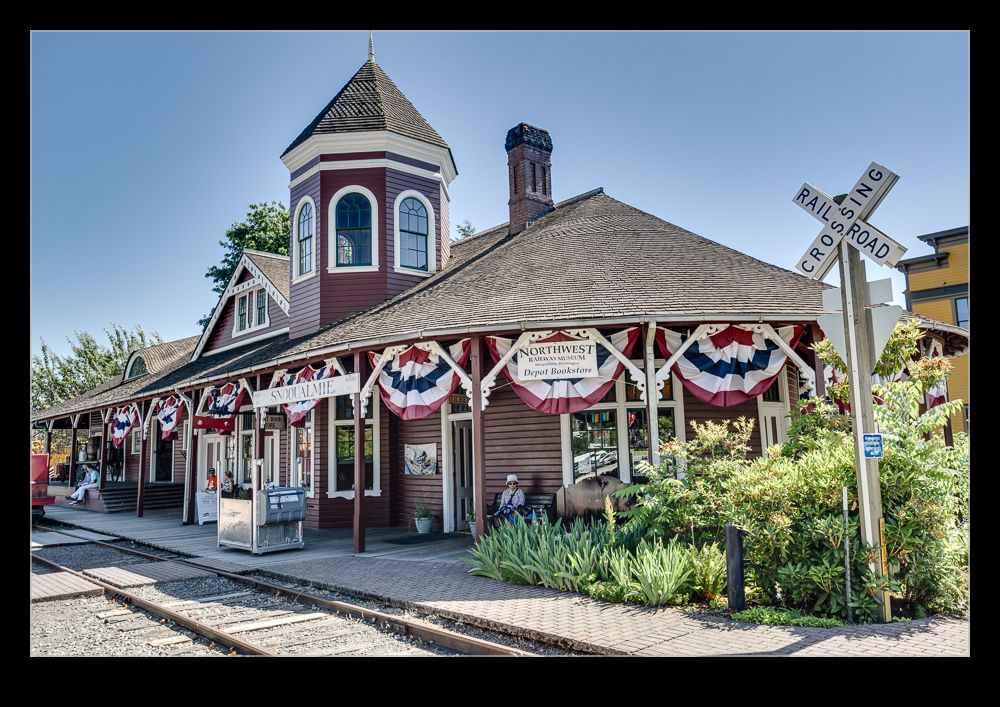 Snoqualmie has an active historic railroad. While we were at the falls, a couple of times we saw a tourist train running along the opposite side of the falls taking visitors on a trip. We never got too close to the train itself while we were there but we did walk past one of the stations. It was a nicely restored building and contained some exhibits on the old services that used to operate there.
Snoqualmie has an active historic railroad. While we were at the falls, a couple of times we saw a tourist train running along the opposite side of the falls taking visitors on a trip. We never got too close to the train itself while we were there but we did walk past one of the stations. It was a nicely restored building and contained some exhibits on the old services that used to operate there.
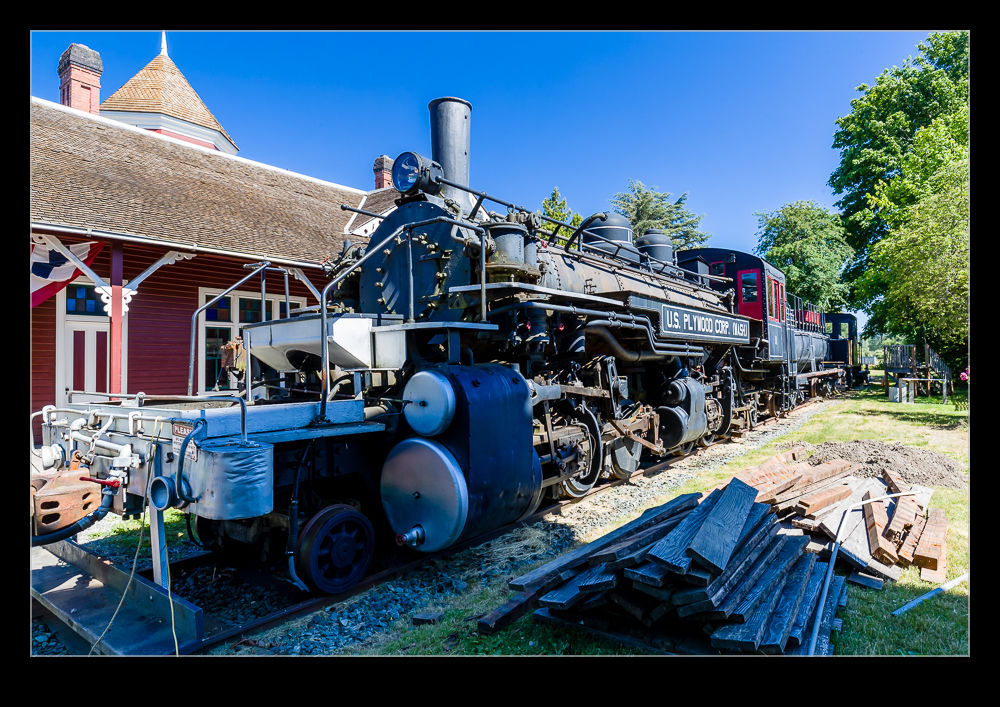 Also, parked out of the back was an old locomotive. It wasn’t going anywhere anymore but it did provide a great example to the visitors of the sort of steam loco that used to operate. Now it was possible to get up close and look at the amazingly complex mechanisms it included. Just outside town was another exhibit. This was a snow clearing machine for the railroad. Rather than a plow, it had a cutting head mounted on the front of the vehicle and a blower that could throw the snow in either direction as required. This example had been rebuilt a number of times prior to retirement but now it sat by the road for visitors to check out. (Being a black vehicle on a high sunny day meant it was also a pain to photograph!)
Also, parked out of the back was an old locomotive. It wasn’t going anywhere anymore but it did provide a great example to the visitors of the sort of steam loco that used to operate. Now it was possible to get up close and look at the amazingly complex mechanisms it included. Just outside town was another exhibit. This was a snow clearing machine for the railroad. Rather than a plow, it had a cutting head mounted on the front of the vehicle and a blower that could throw the snow in either direction as required. This example had been rebuilt a number of times prior to retirement but now it sat by the road for visitors to check out. (Being a black vehicle on a high sunny day meant it was also a pain to photograph!)
Hydro Power!
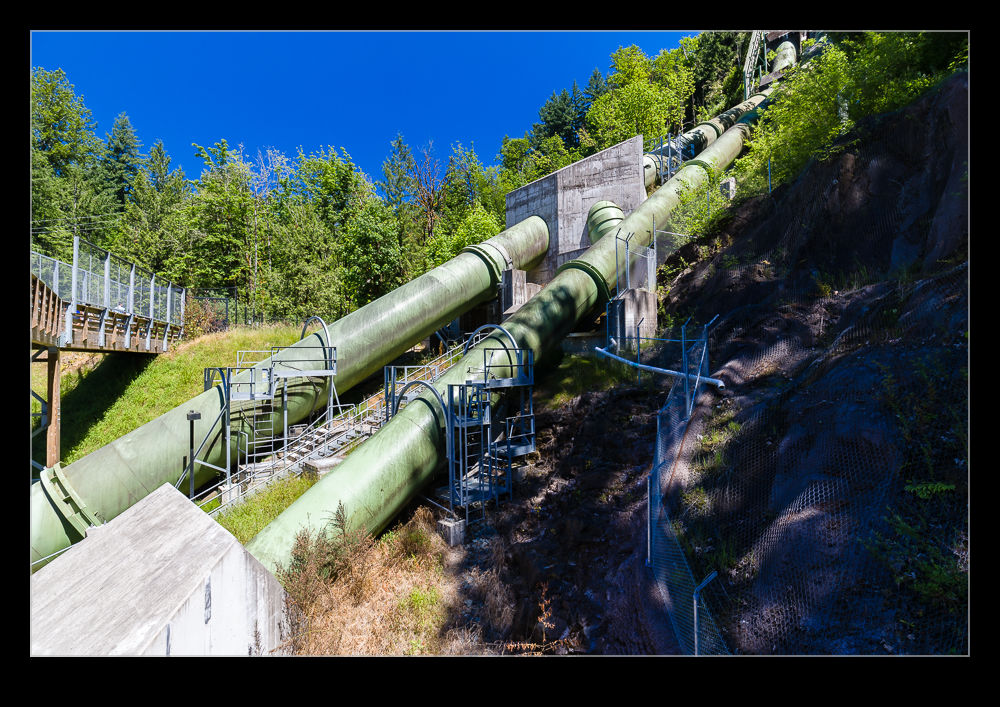 Snoqualmie Falls may be impressive but they would be even more so if there weren’t a diversion of a lot of the water. There are two hydroelectric power stations at the Falls. The original station is built into the Falls themselves. Water is taken off at one side and drops down to some turbines before being ejected alongside the base of the falls. The exiting water can be seen from above.
Snoqualmie Falls may be impressive but they would be even more so if there weren’t a diversion of a lot of the water. There are two hydroelectric power stations at the Falls. The original station is built into the Falls themselves. Water is taken off at one side and drops down to some turbines before being ejected alongside the base of the falls. The exiting water can be seen from above.
 The second station was built a few years later and has been expanded since. Water is ducted around the Falls to a holding pond where it then enters some pipes that run it down the side of the hill to a turbine hall. The hall has been replaced and expanded relatively recently but the style has been kept in keeping with the original. The pipes also look like they have been replaced because they looked quite new. As we walked across them, it was hard to imagine just how much power was flowing within.
The second station was built a few years later and has been expanded since. Water is ducted around the Falls to a holding pond where it then enters some pipes that run it down the side of the hill to a turbine hall. The hall has been replaced and expanded relatively recently but the style has been kept in keeping with the original. The pipes also look like they have been replaced because they looked quite new. As we walked across them, it was hard to imagine just how much power was flowing within.
